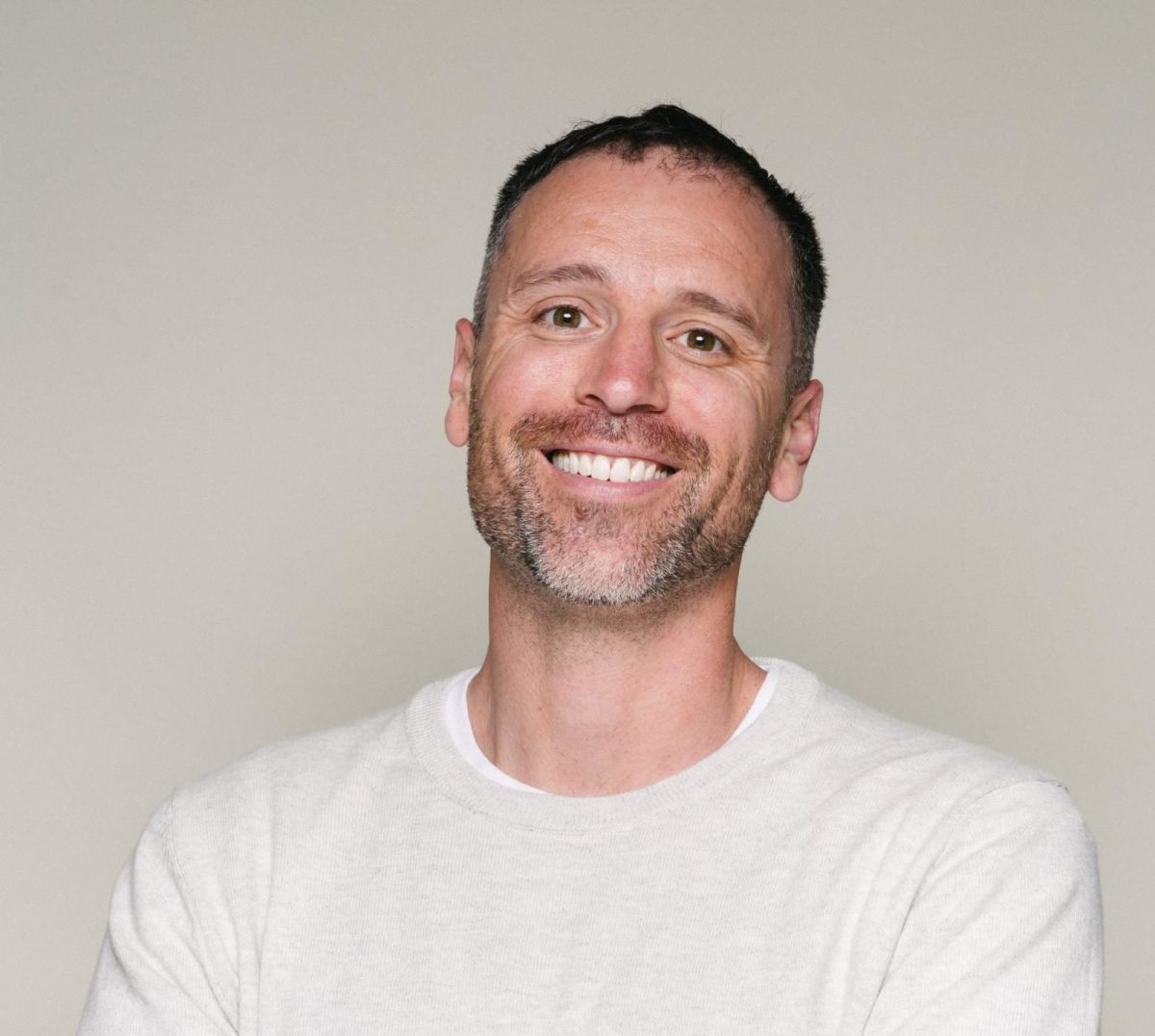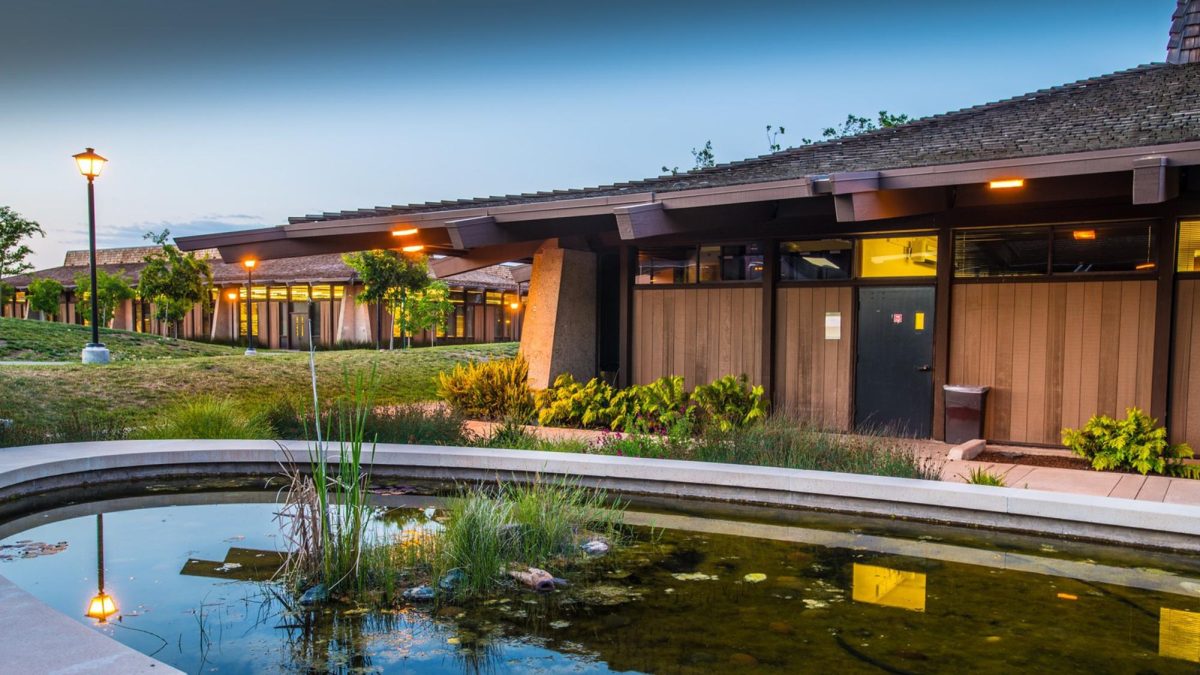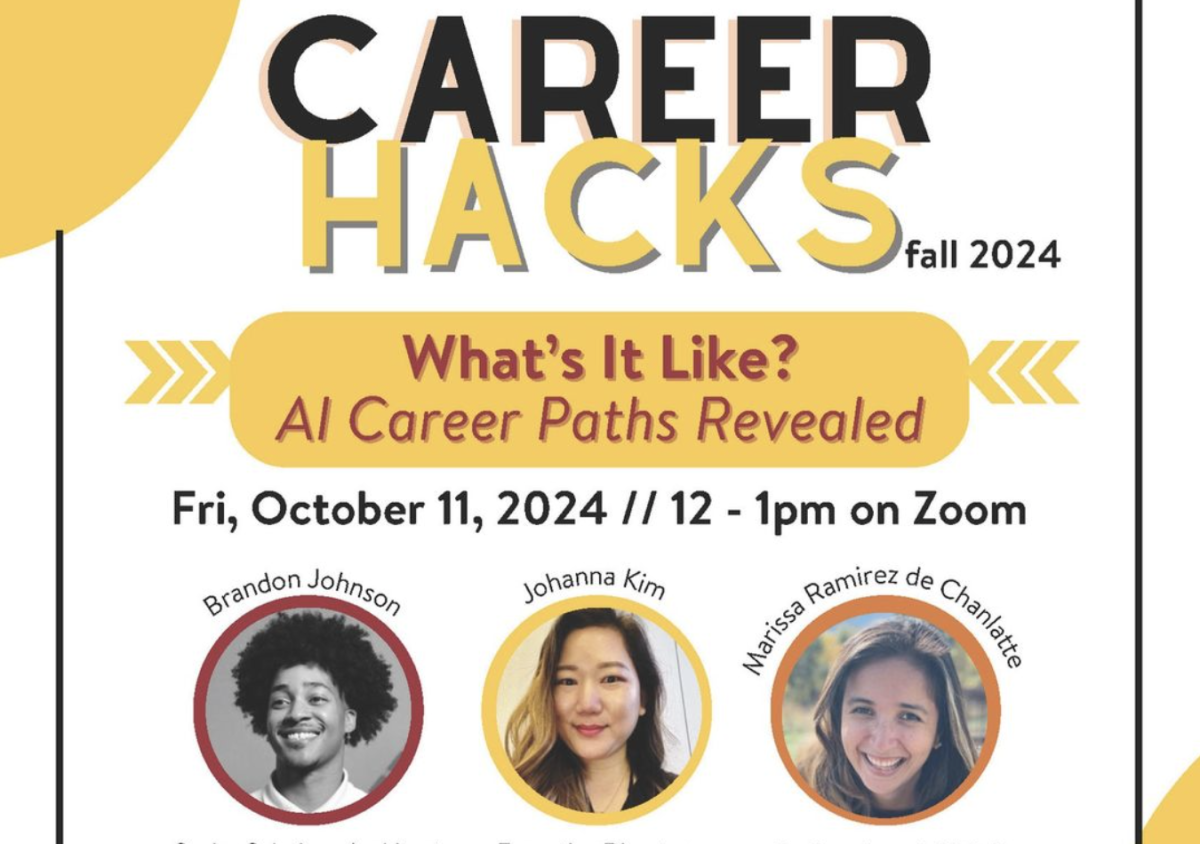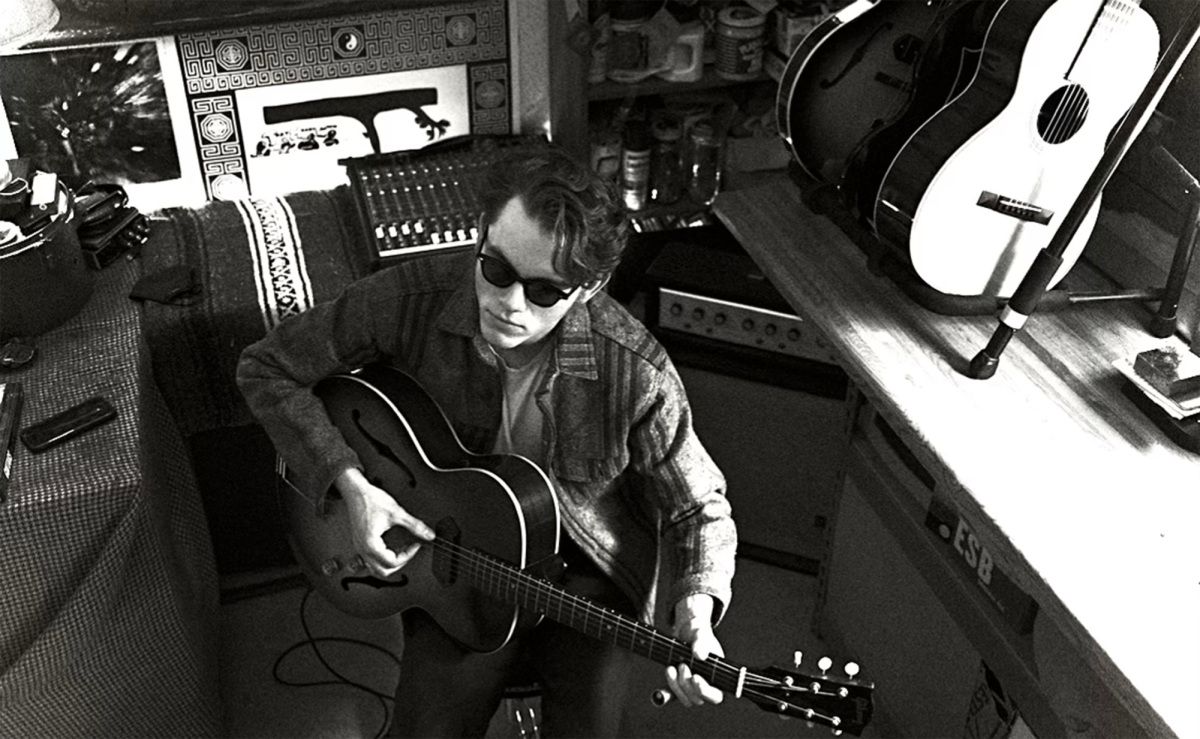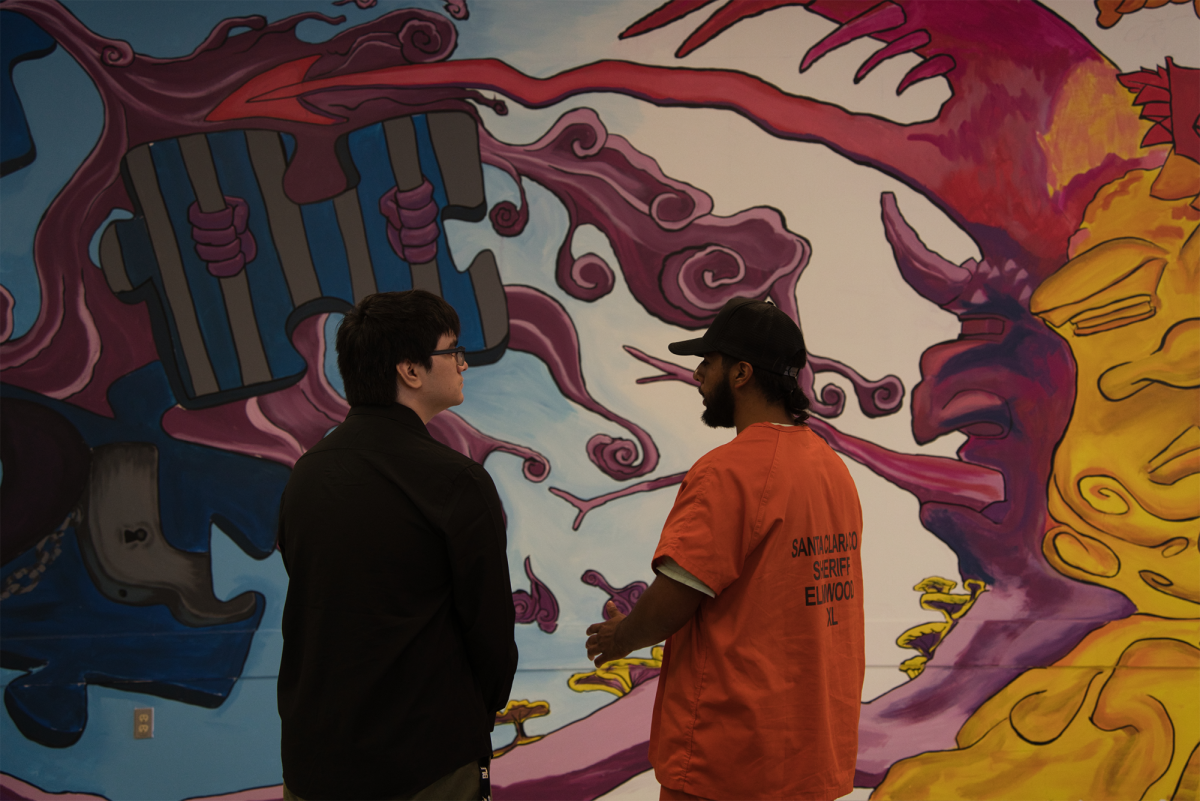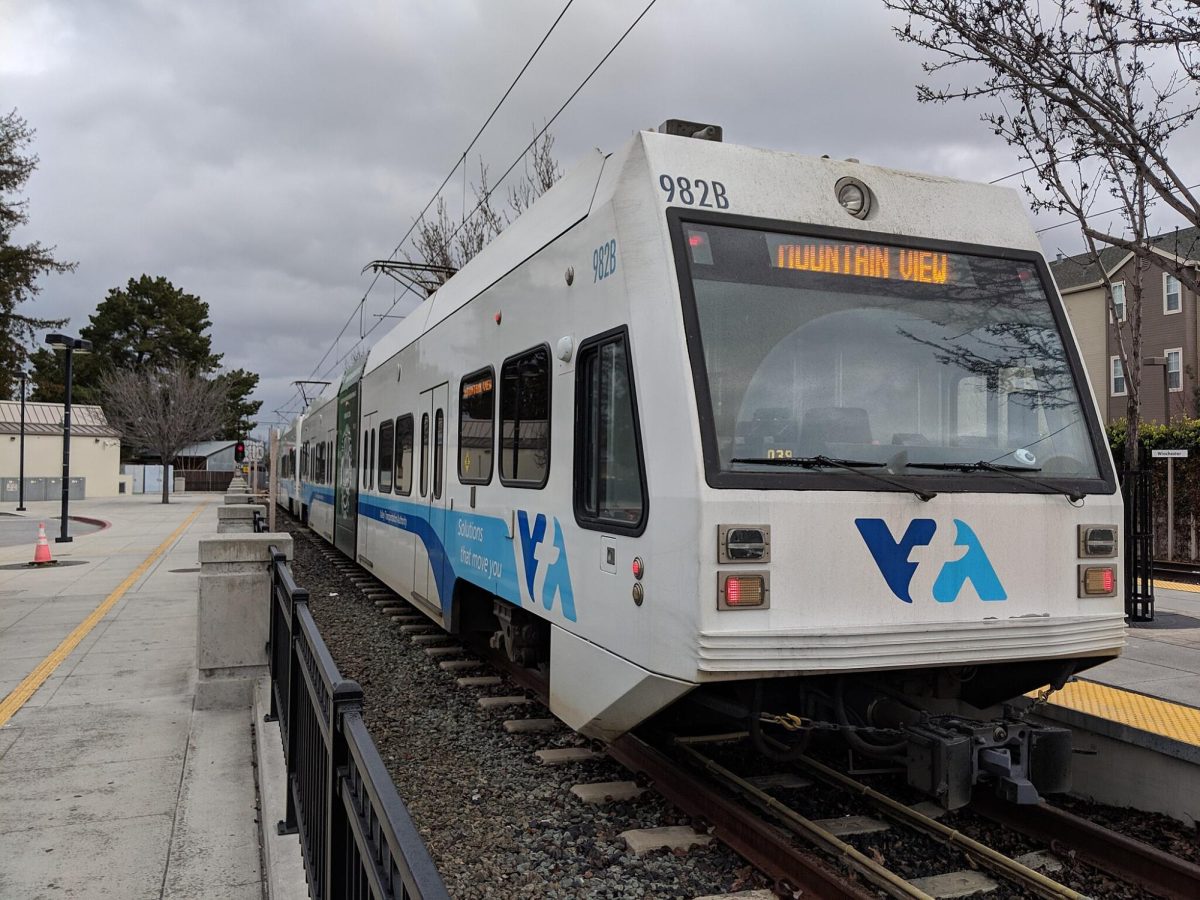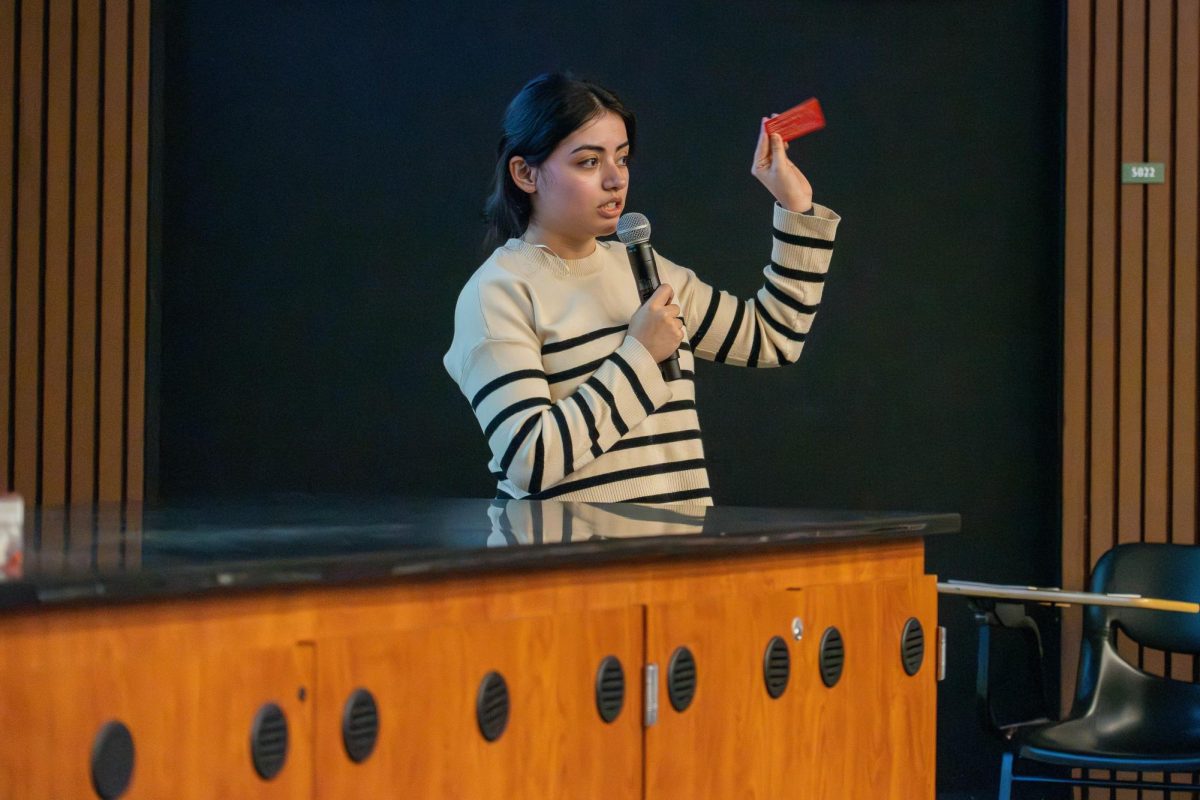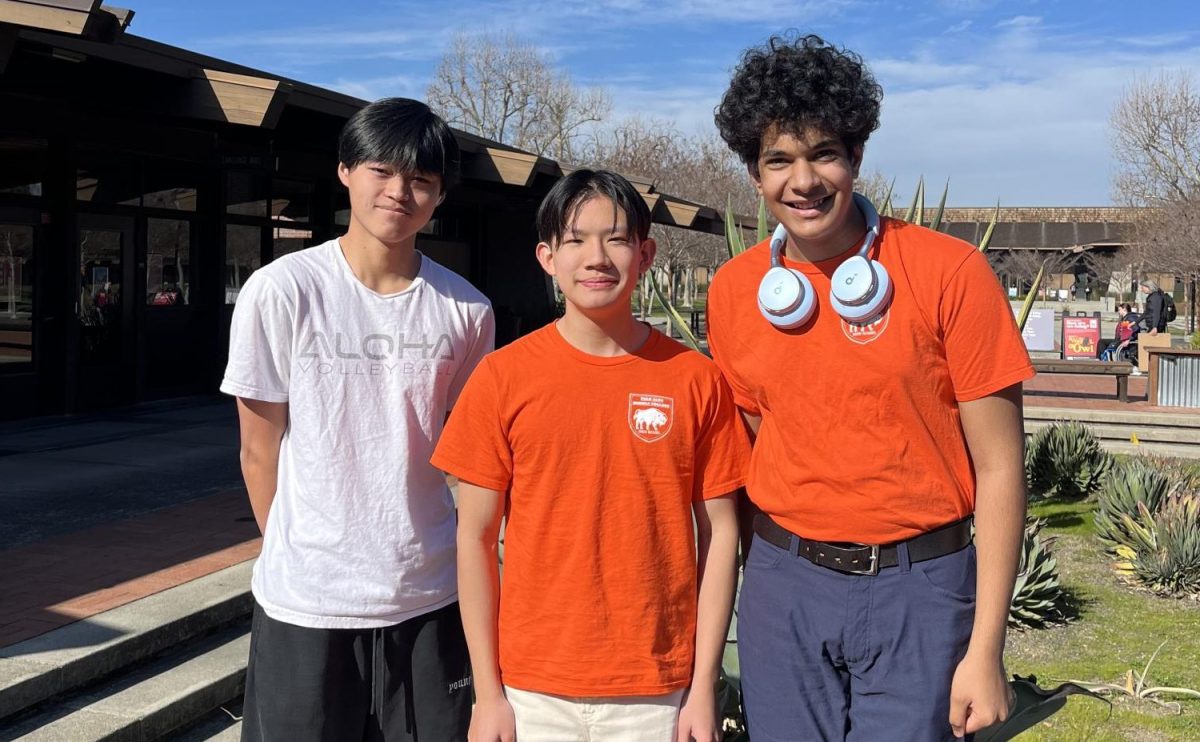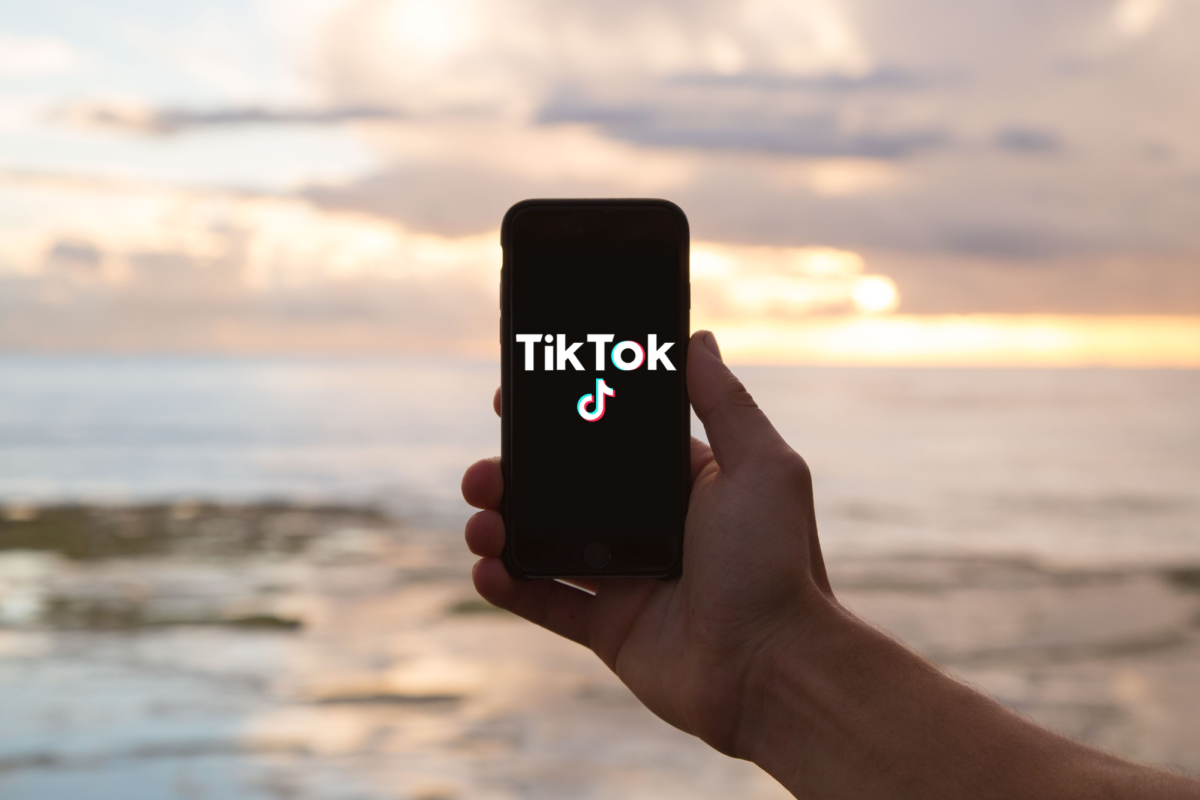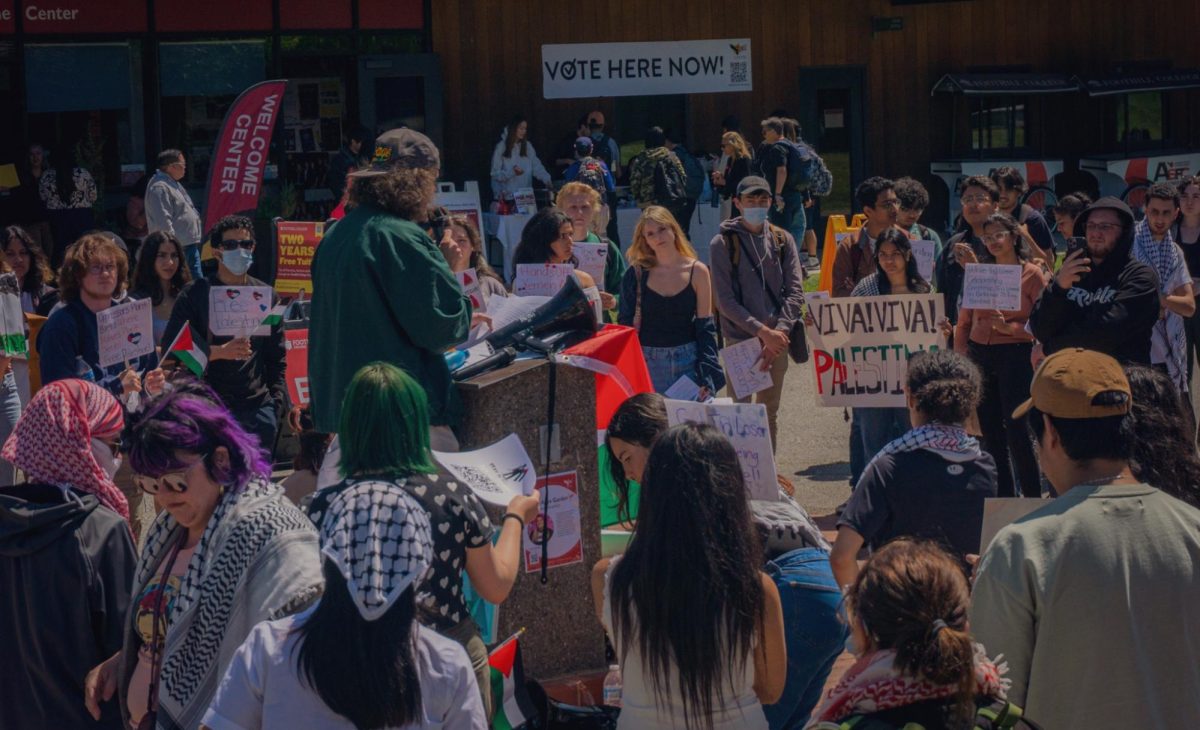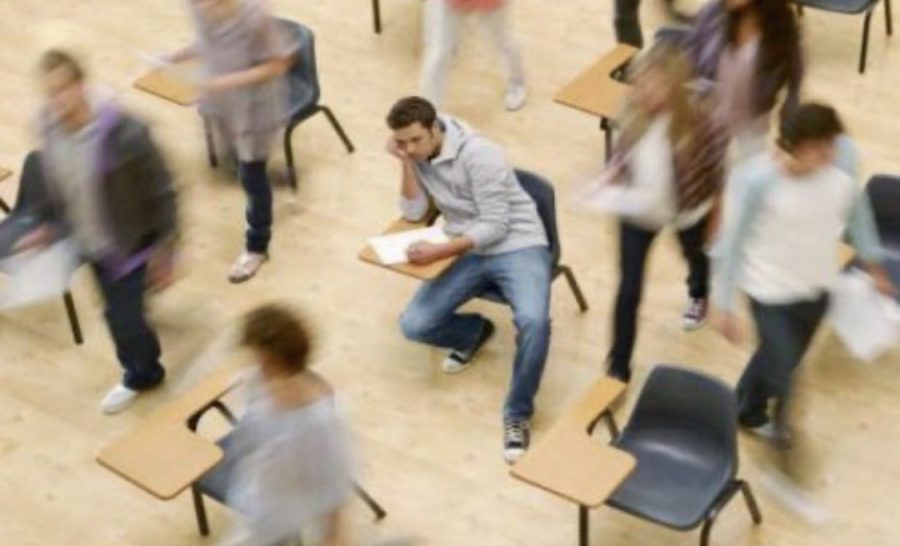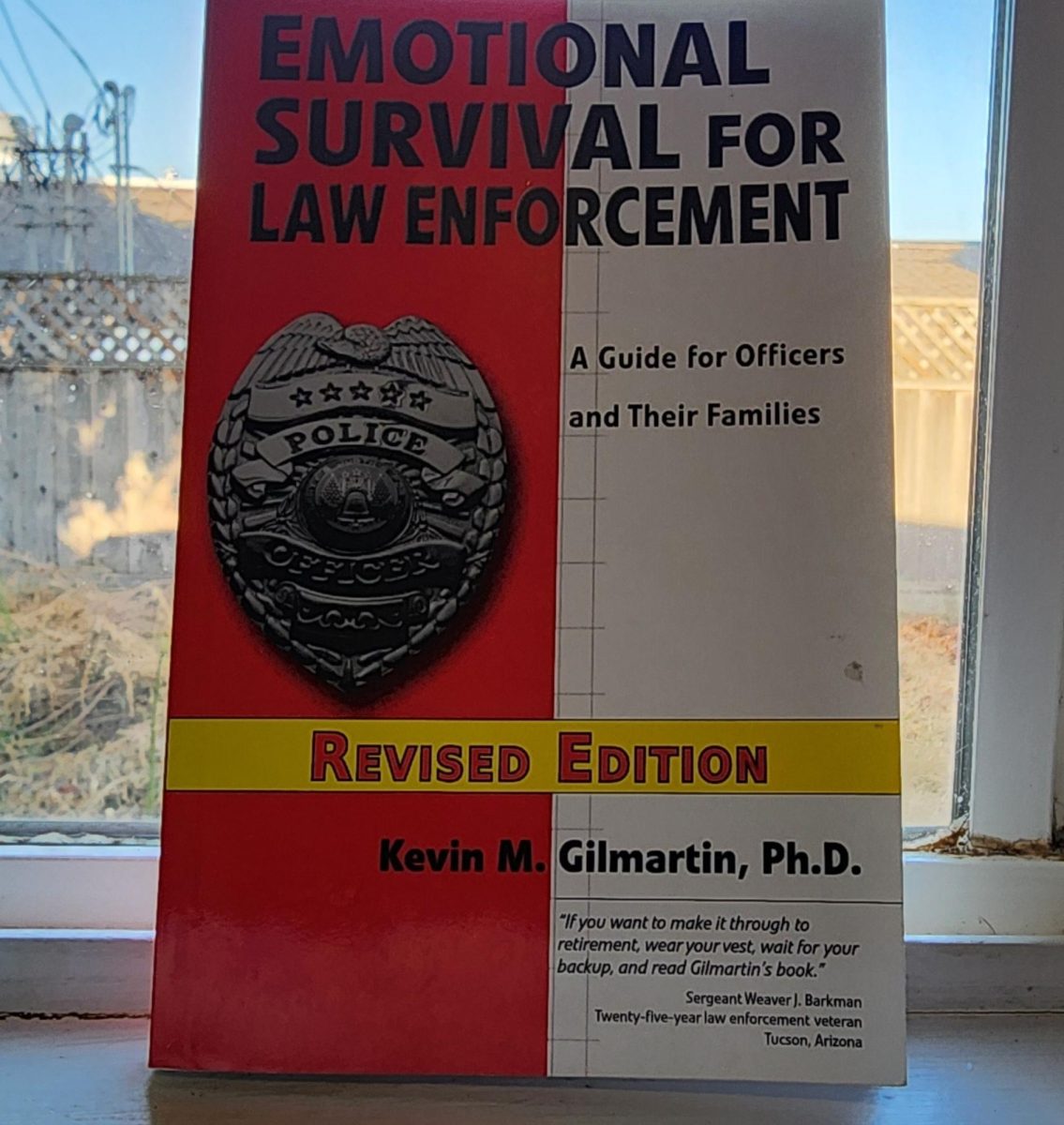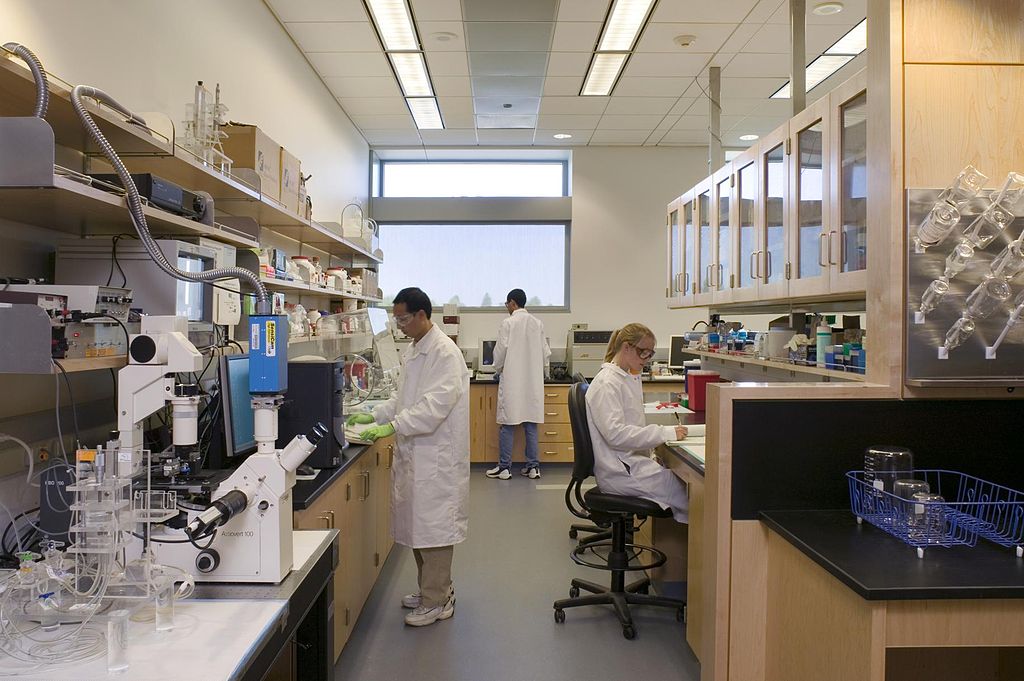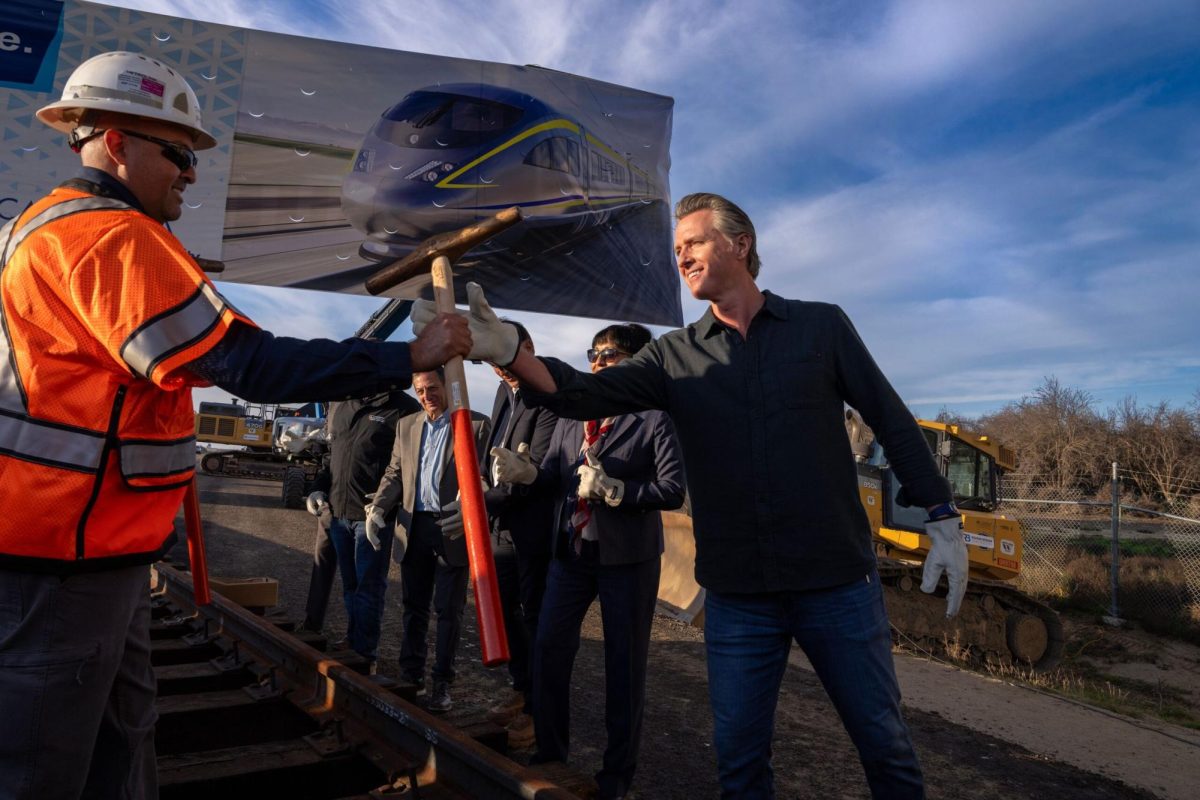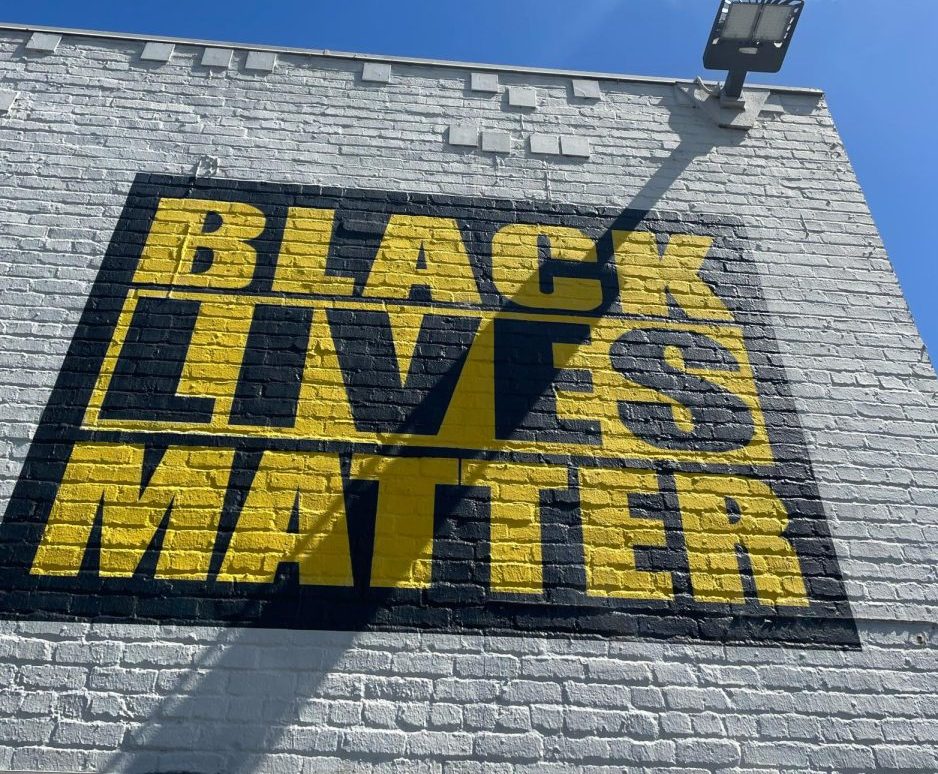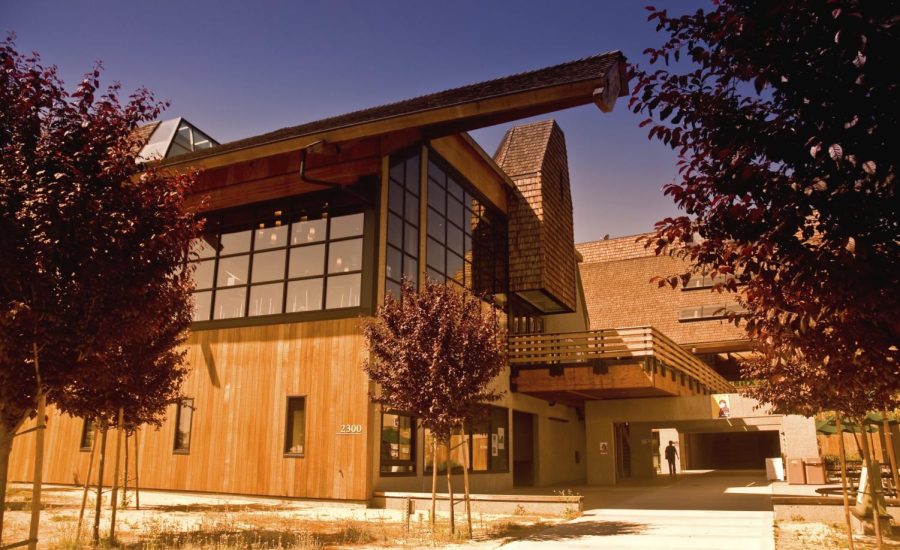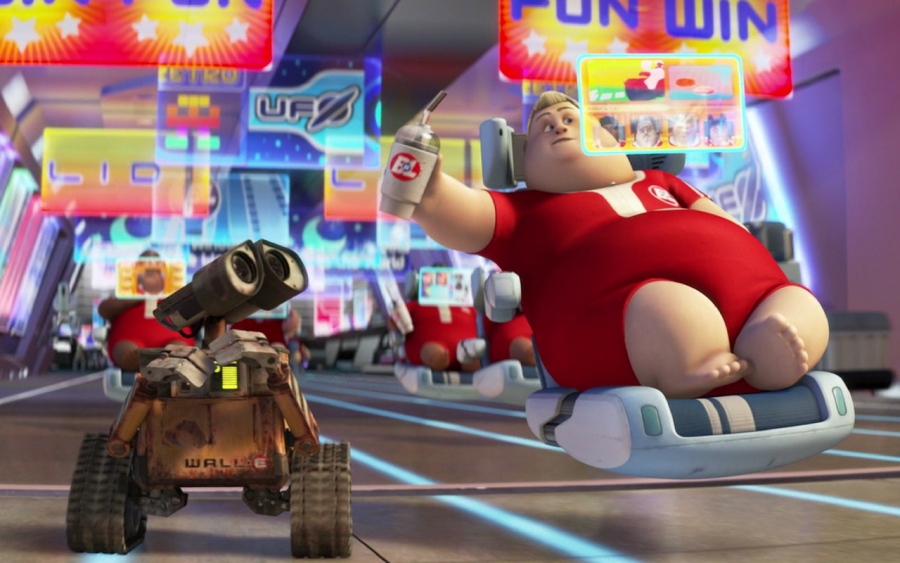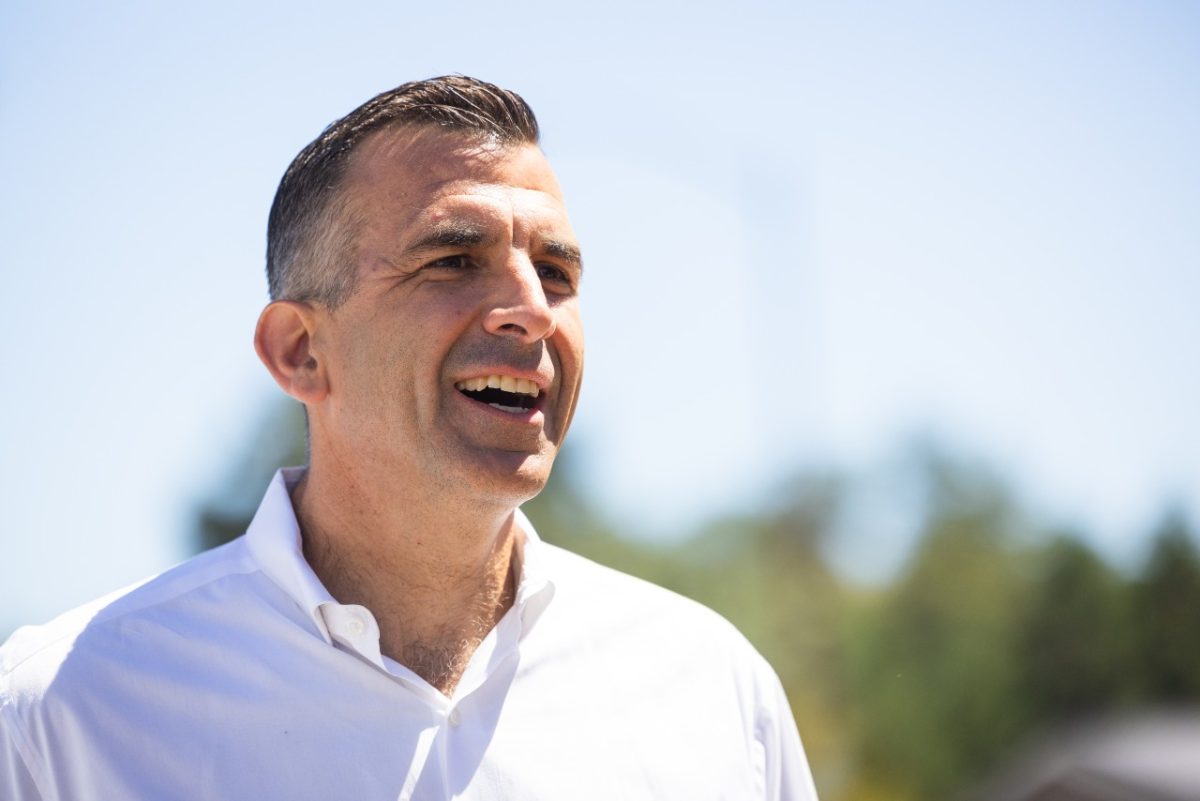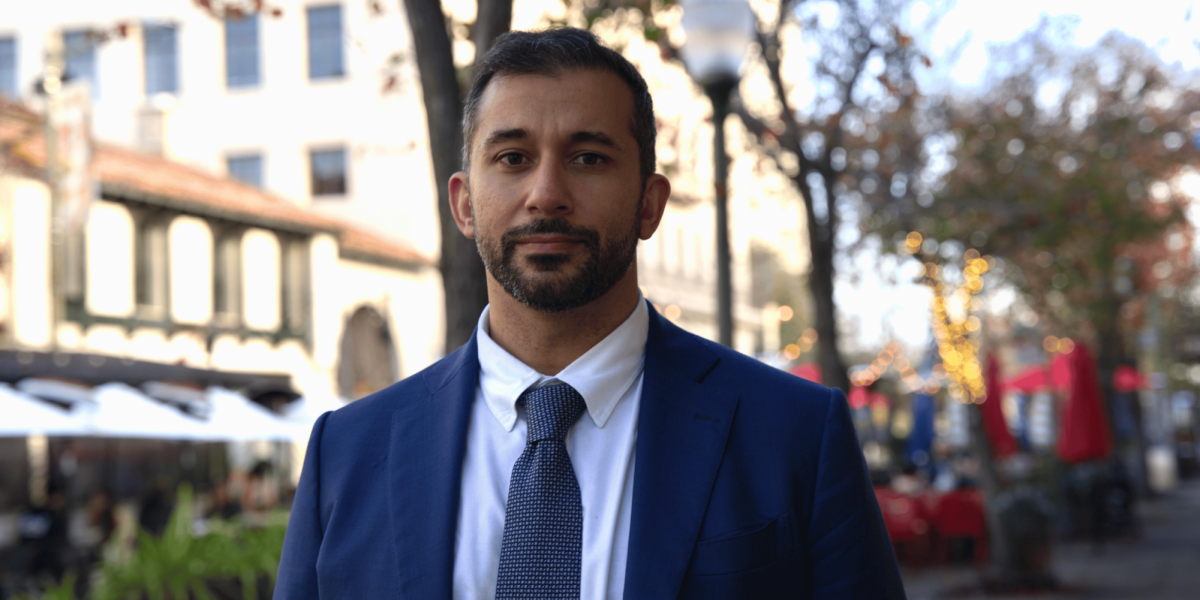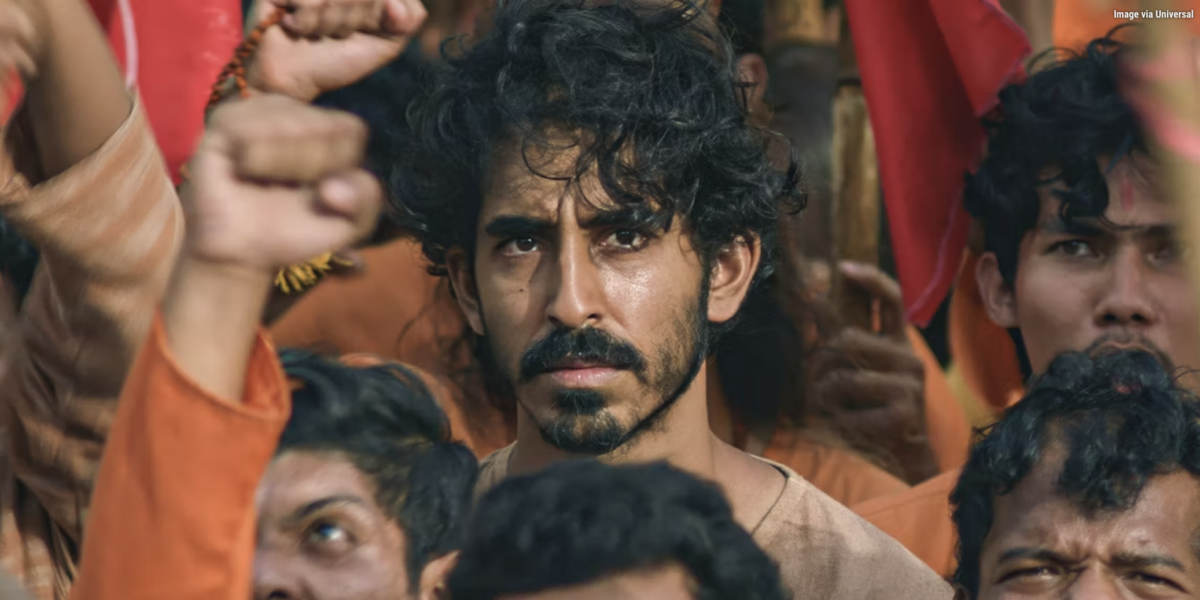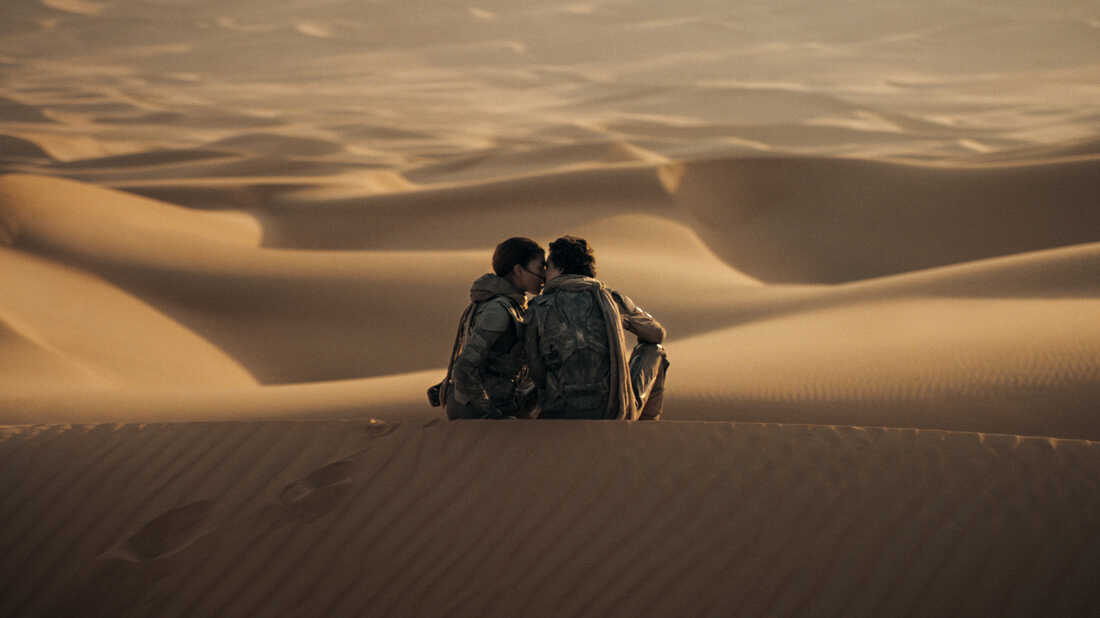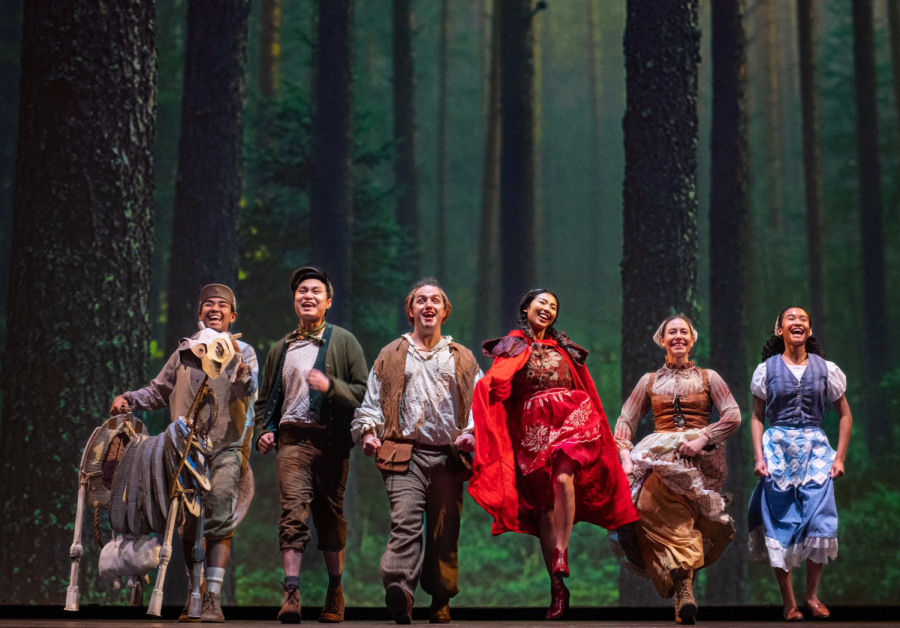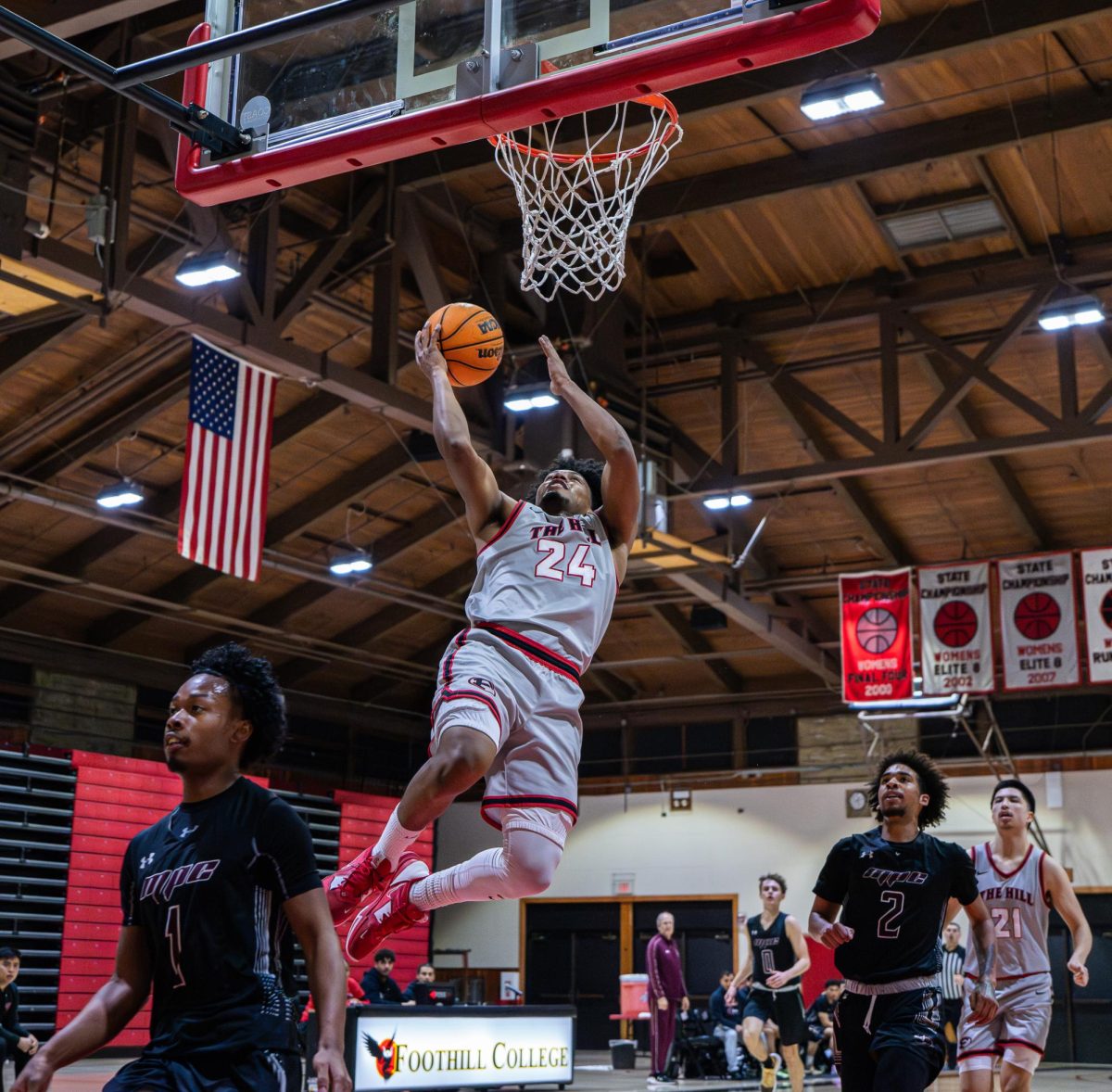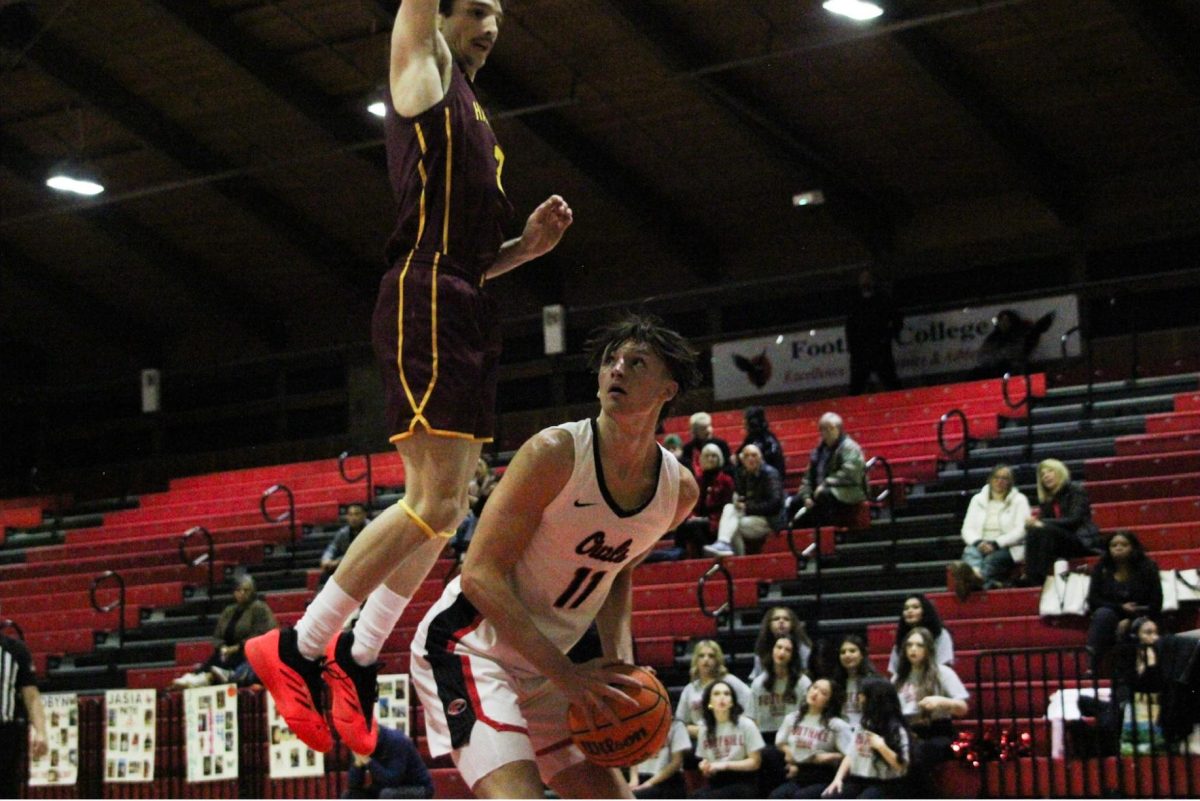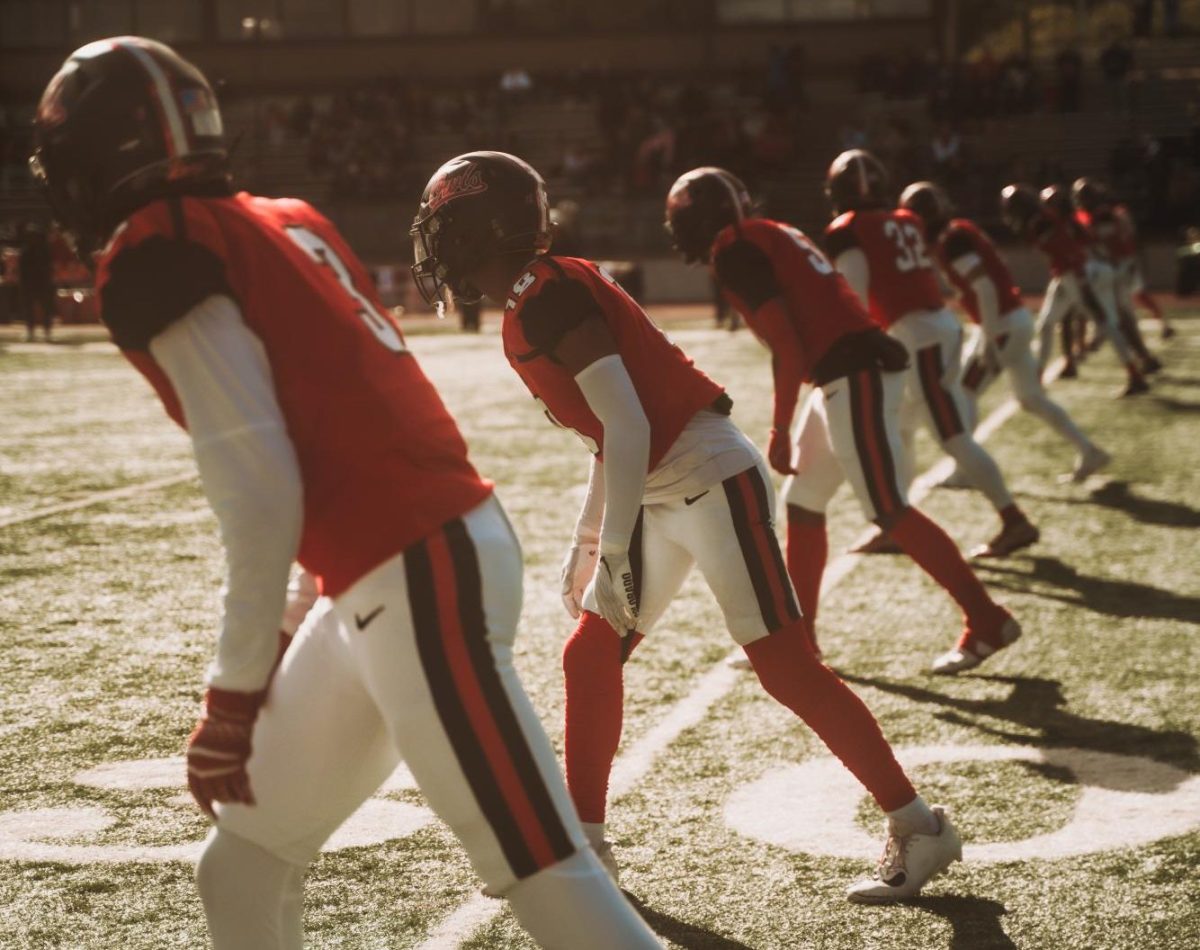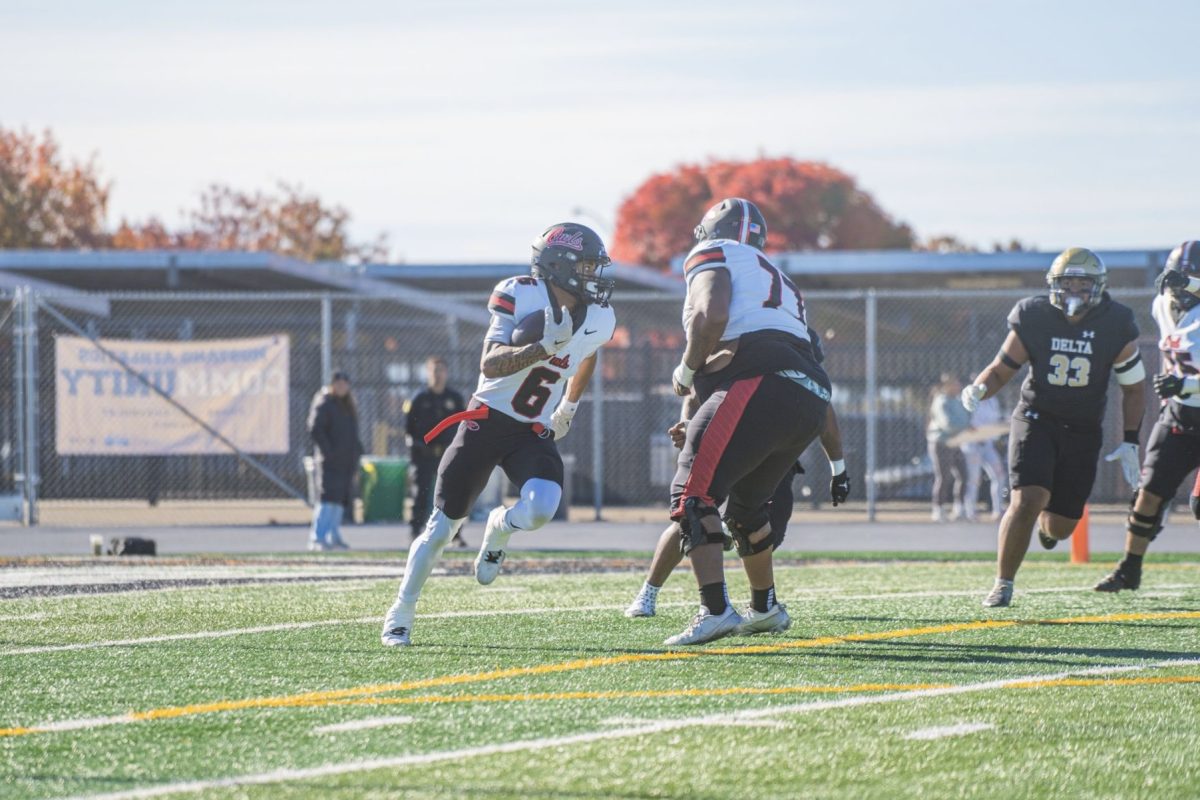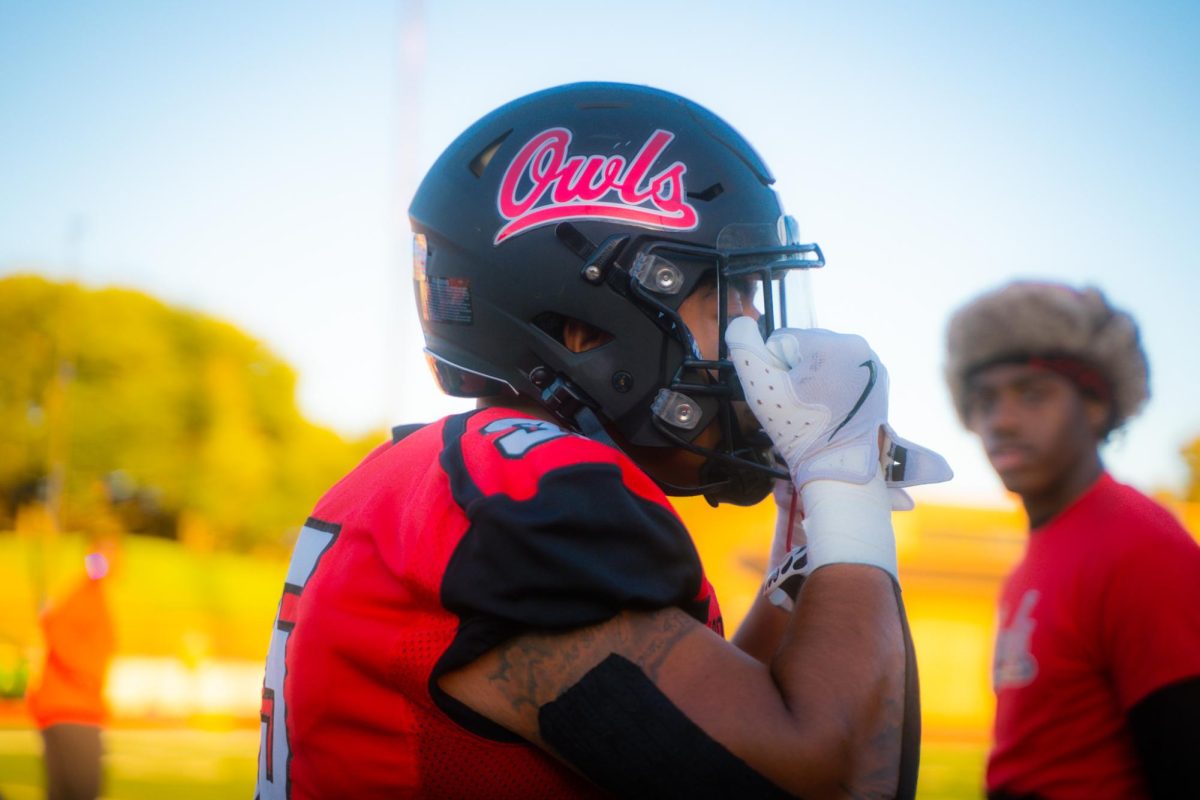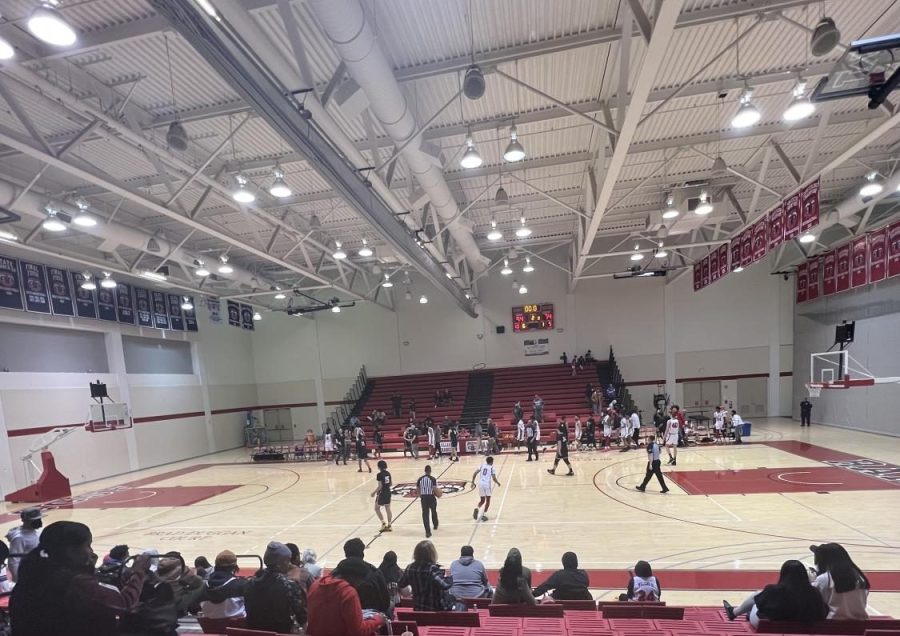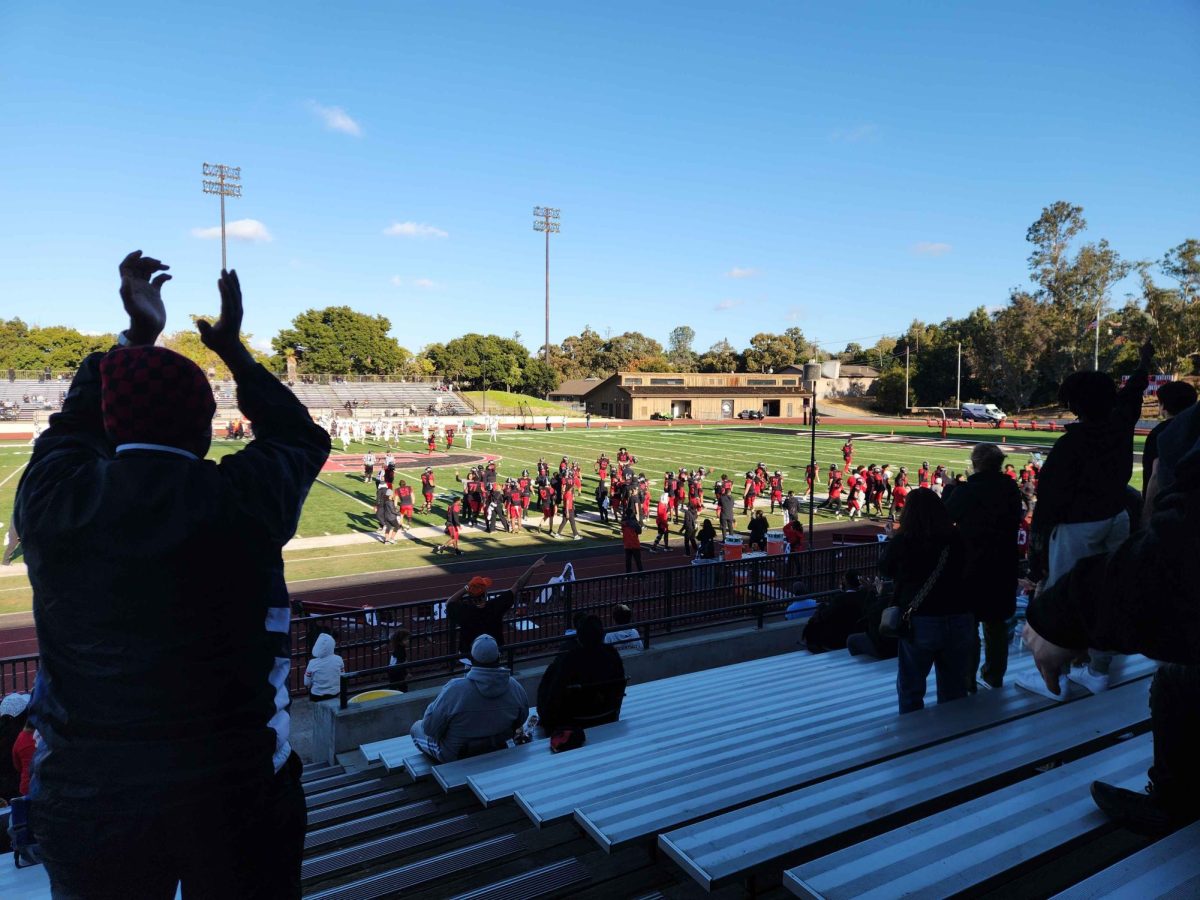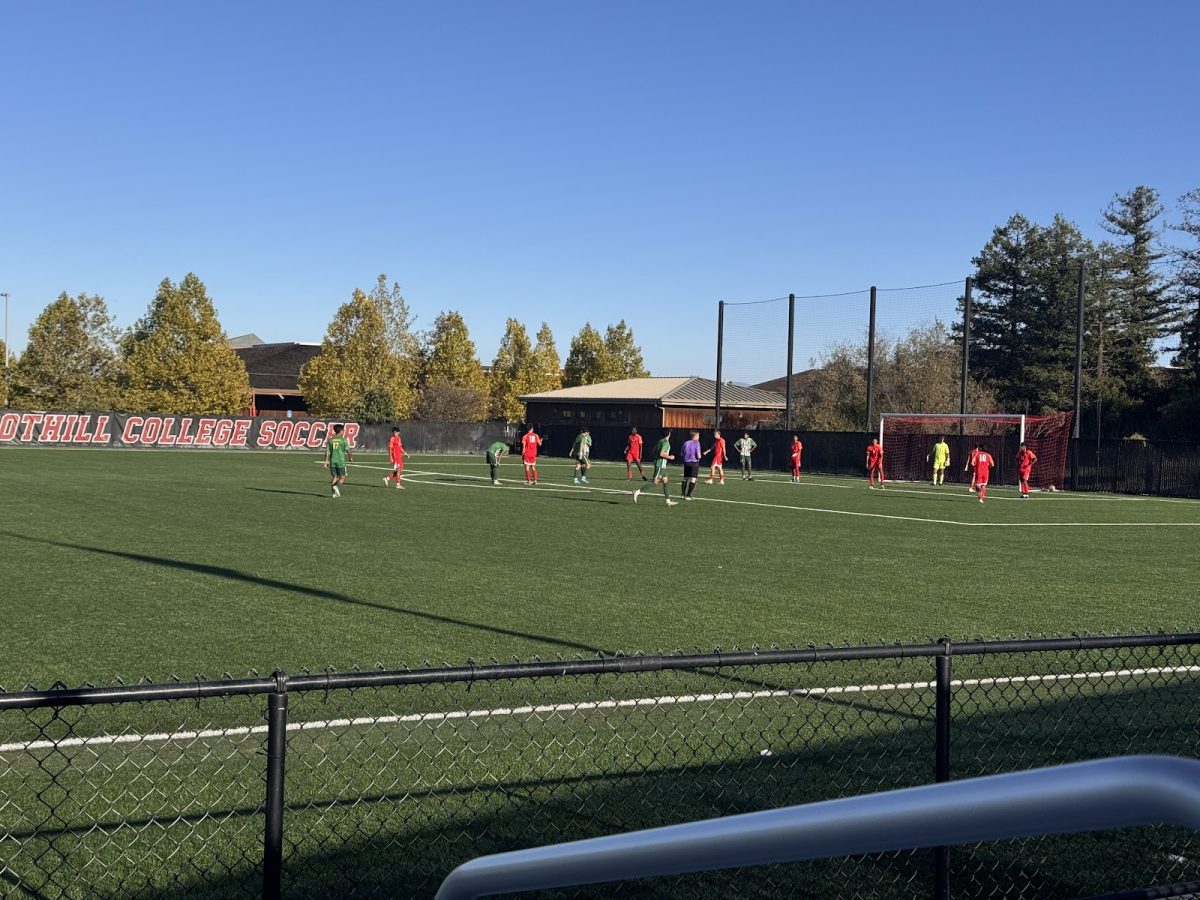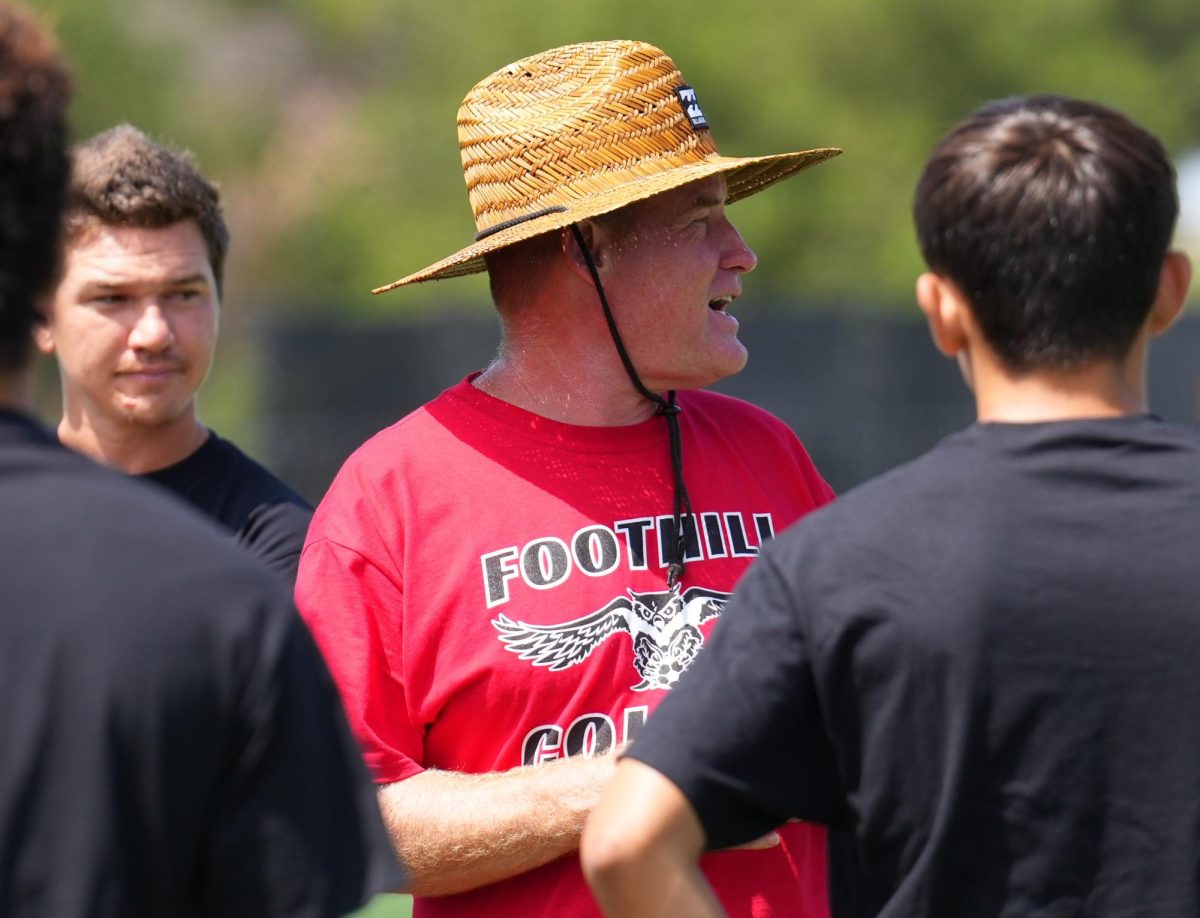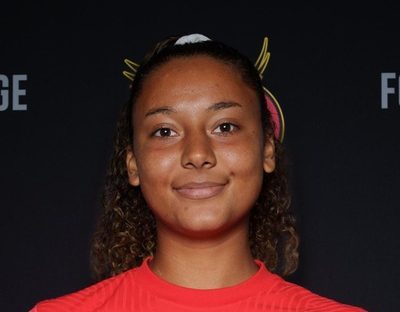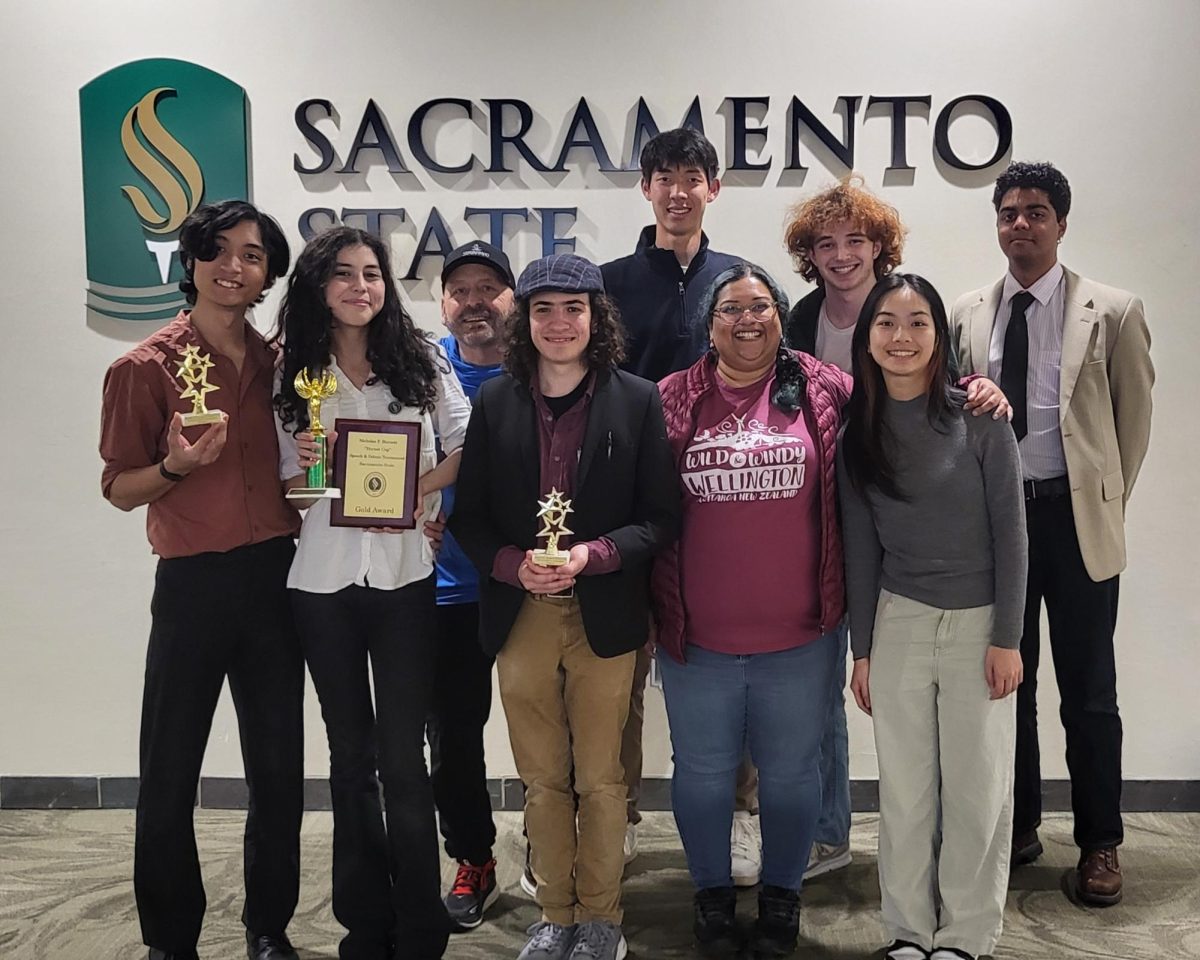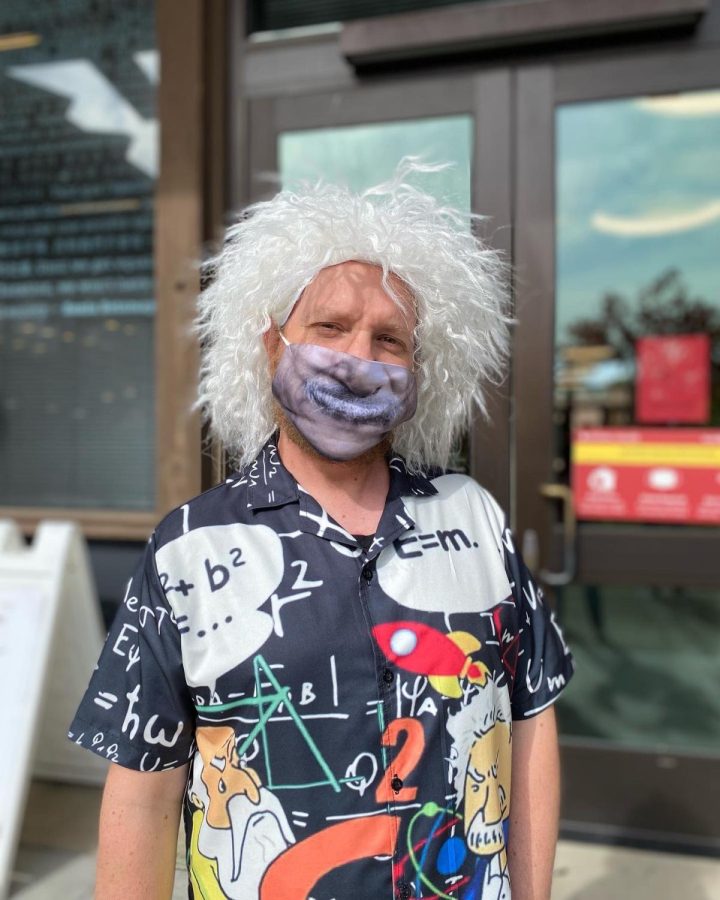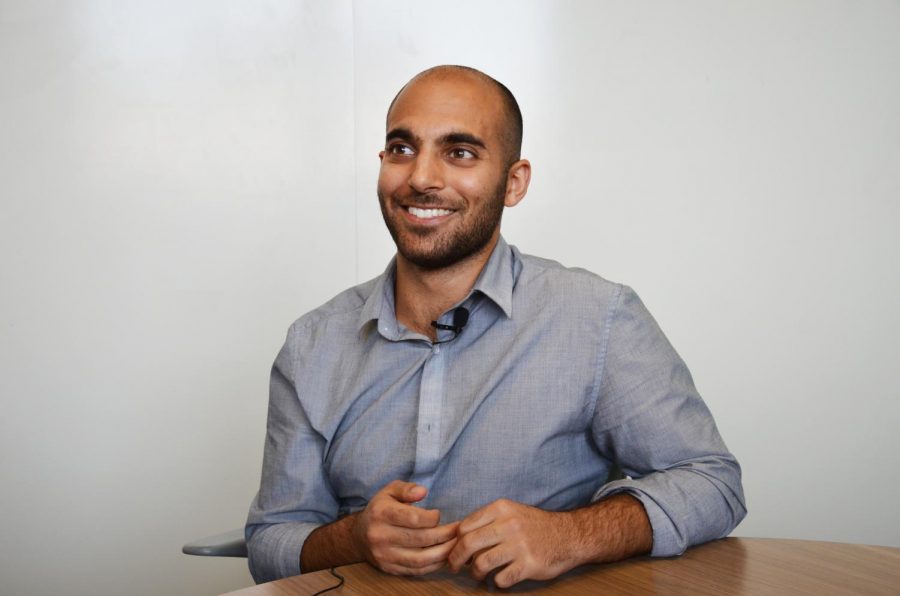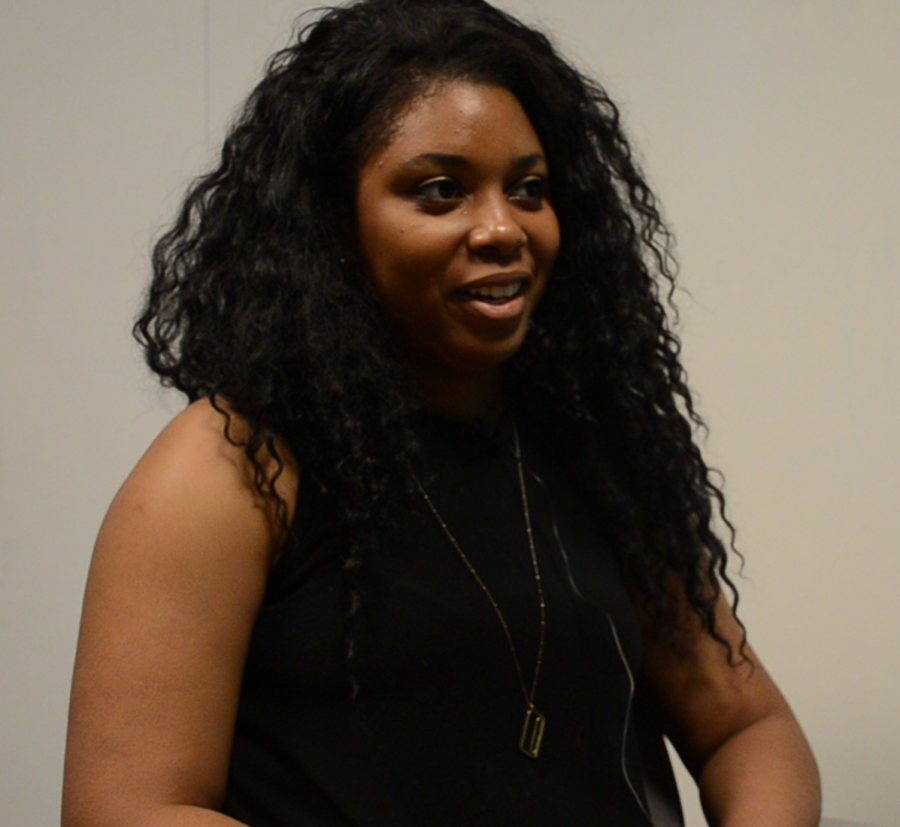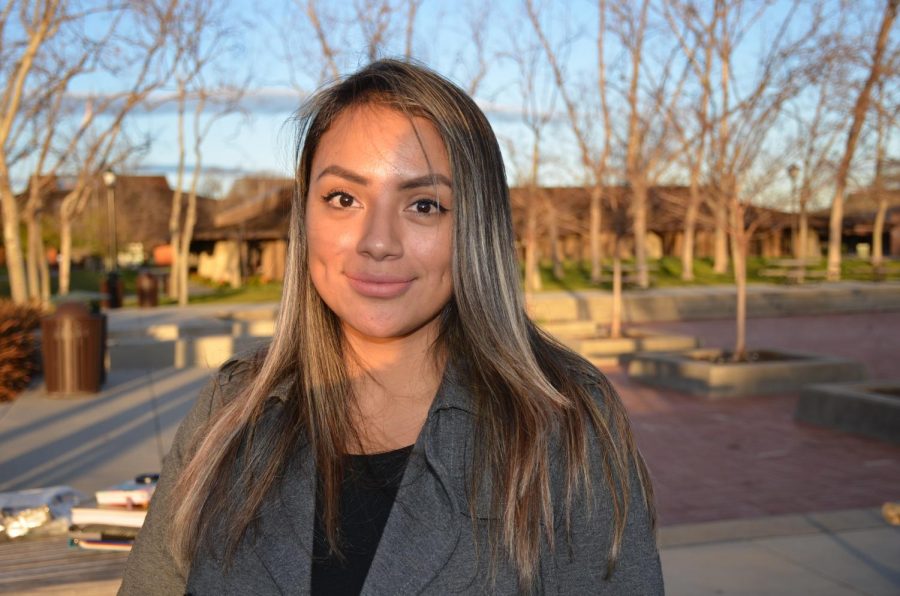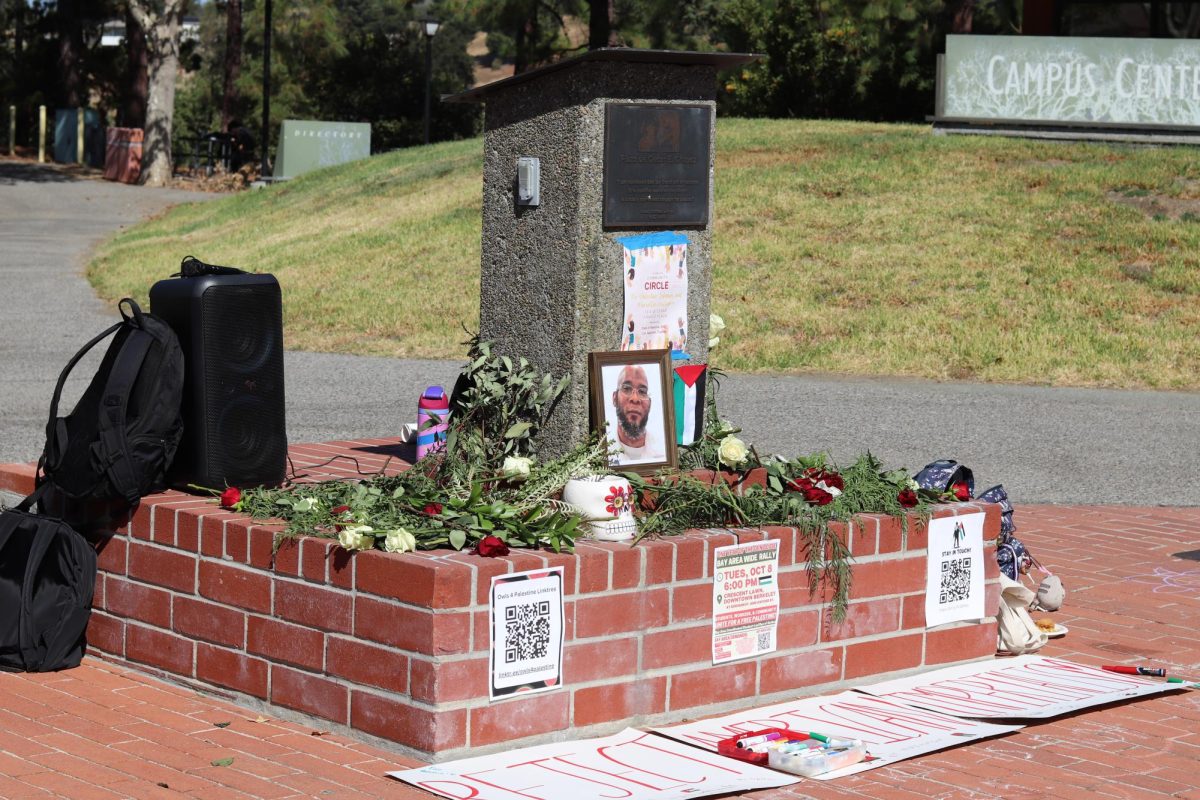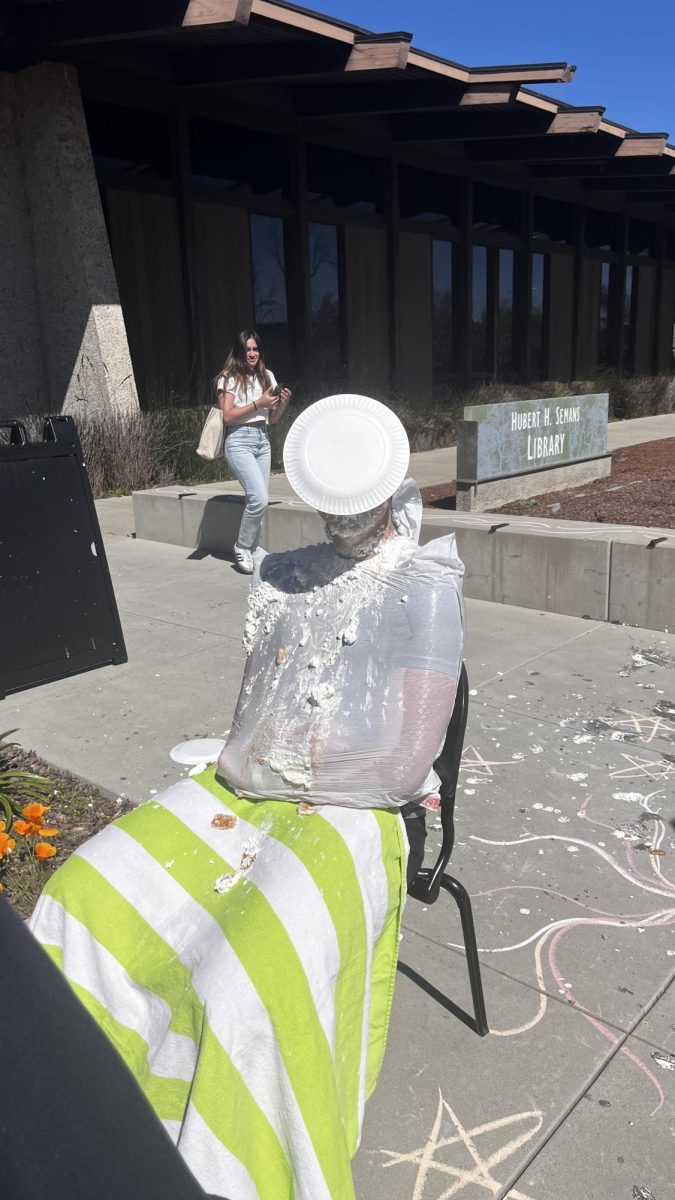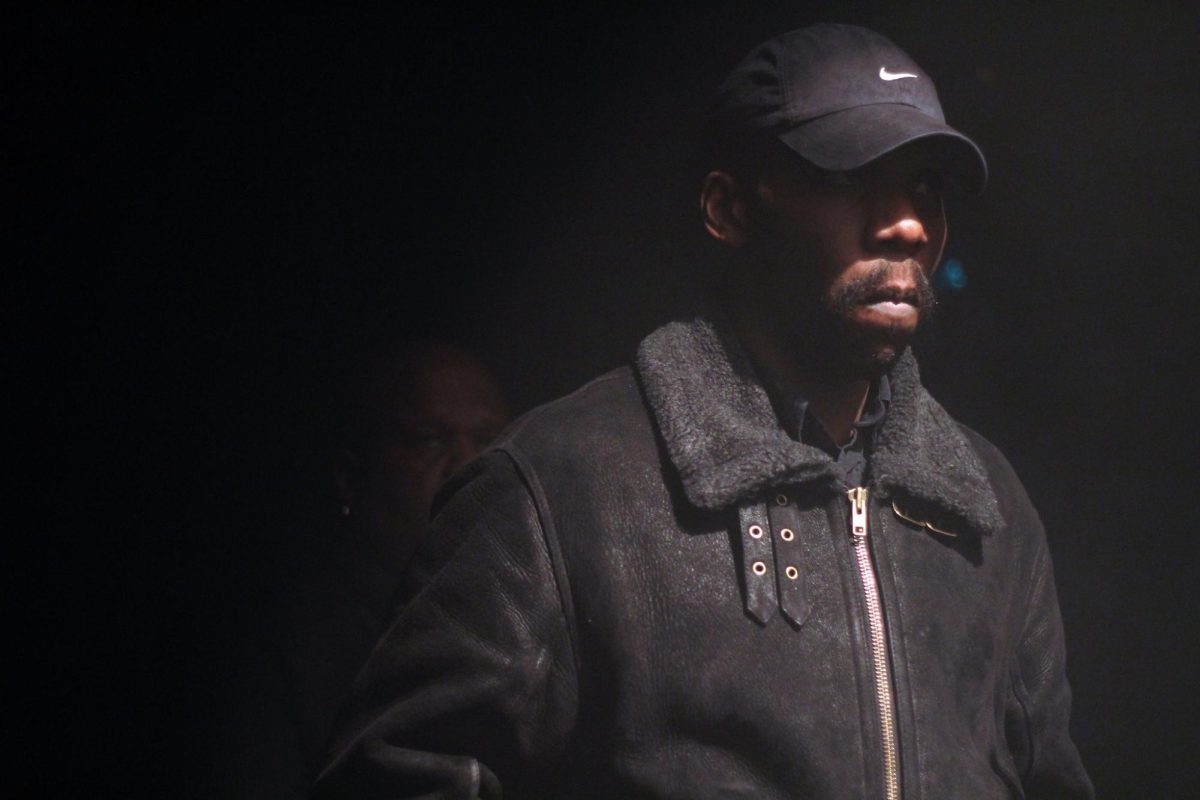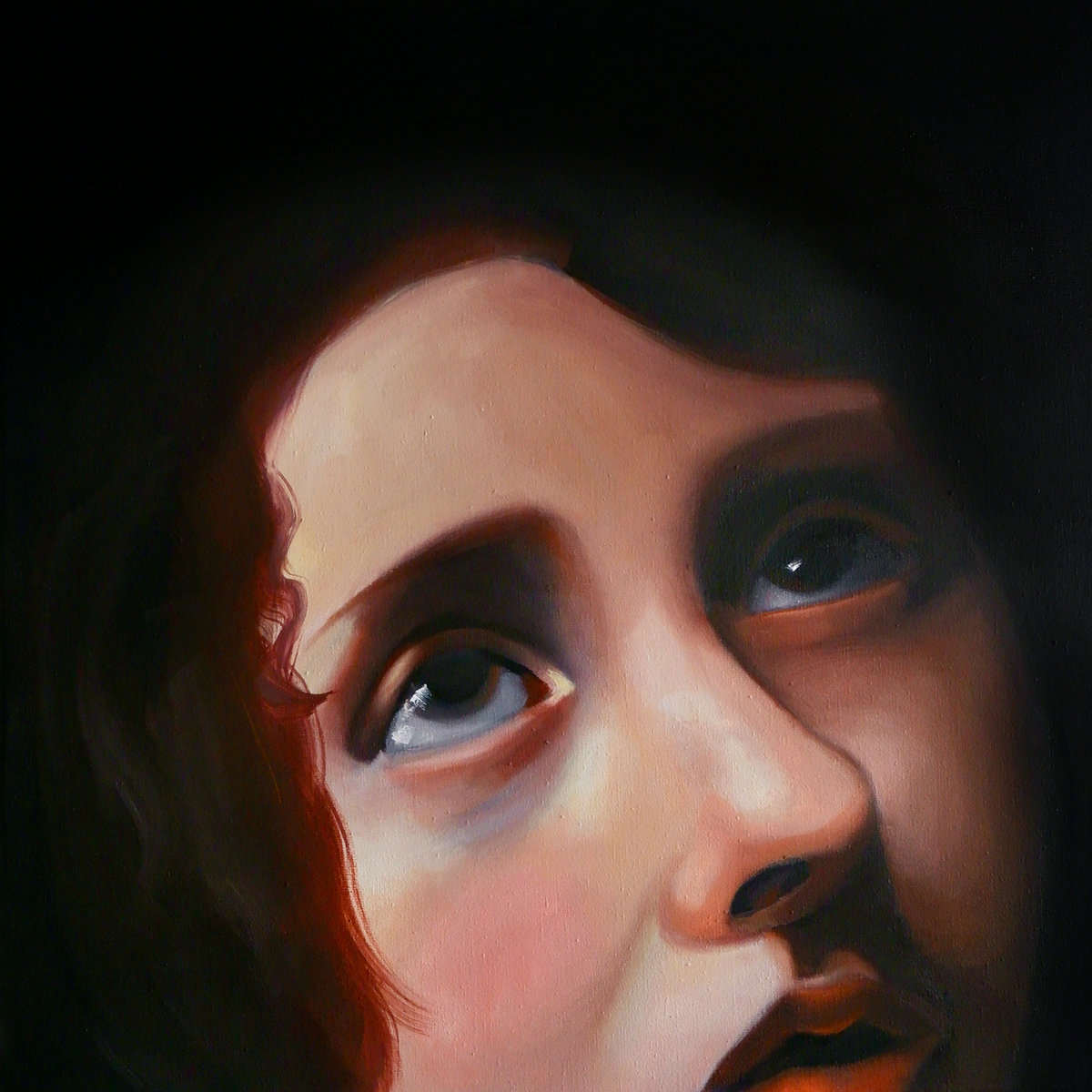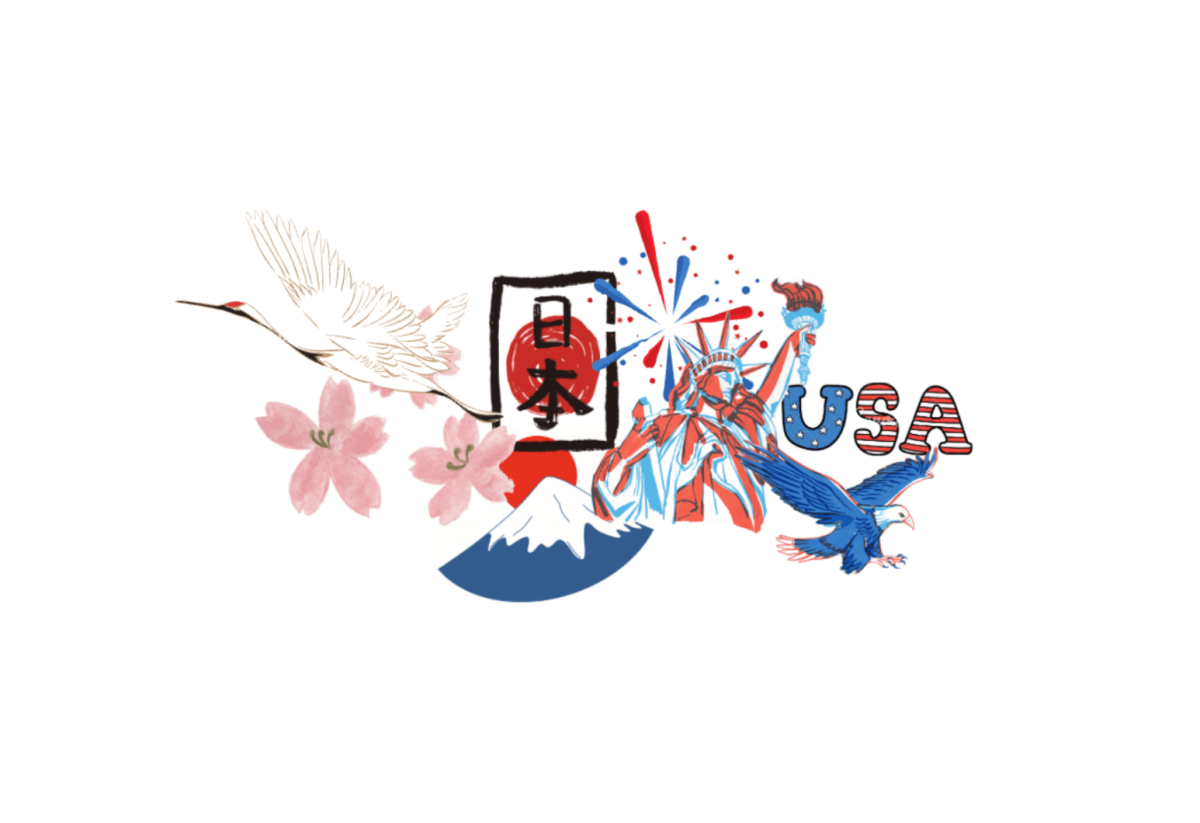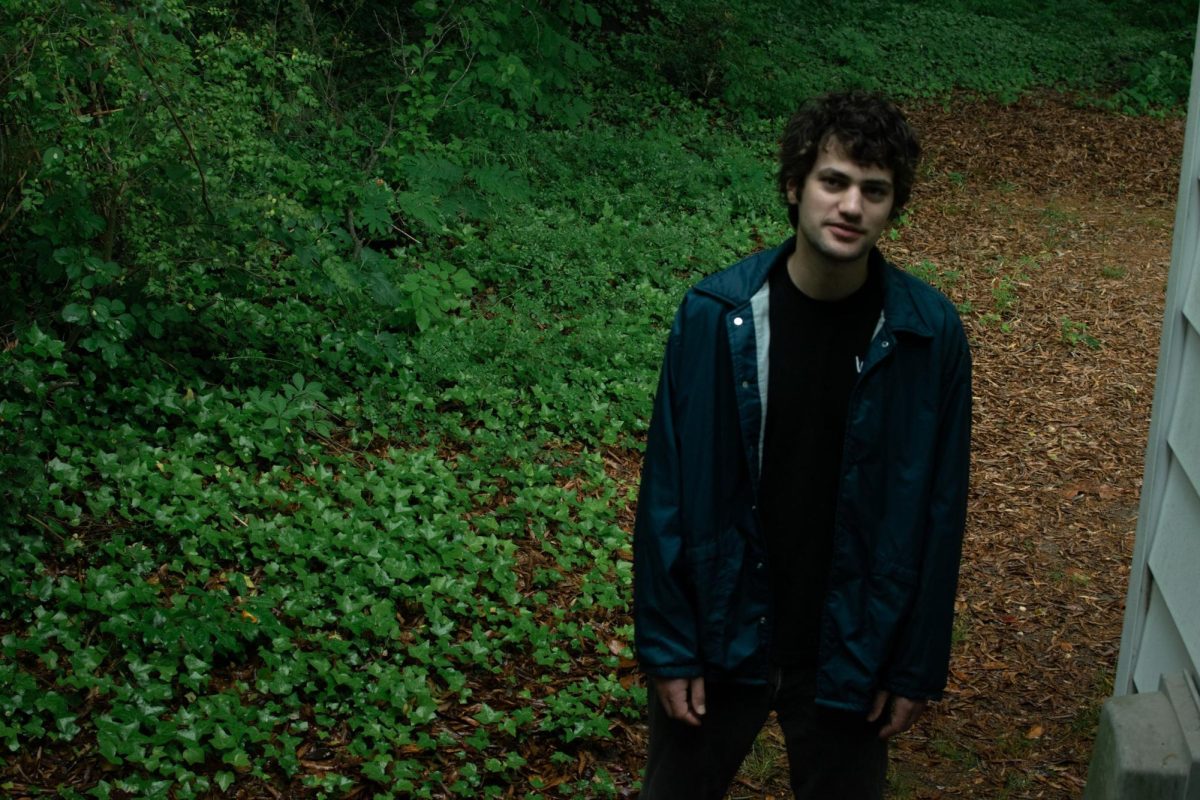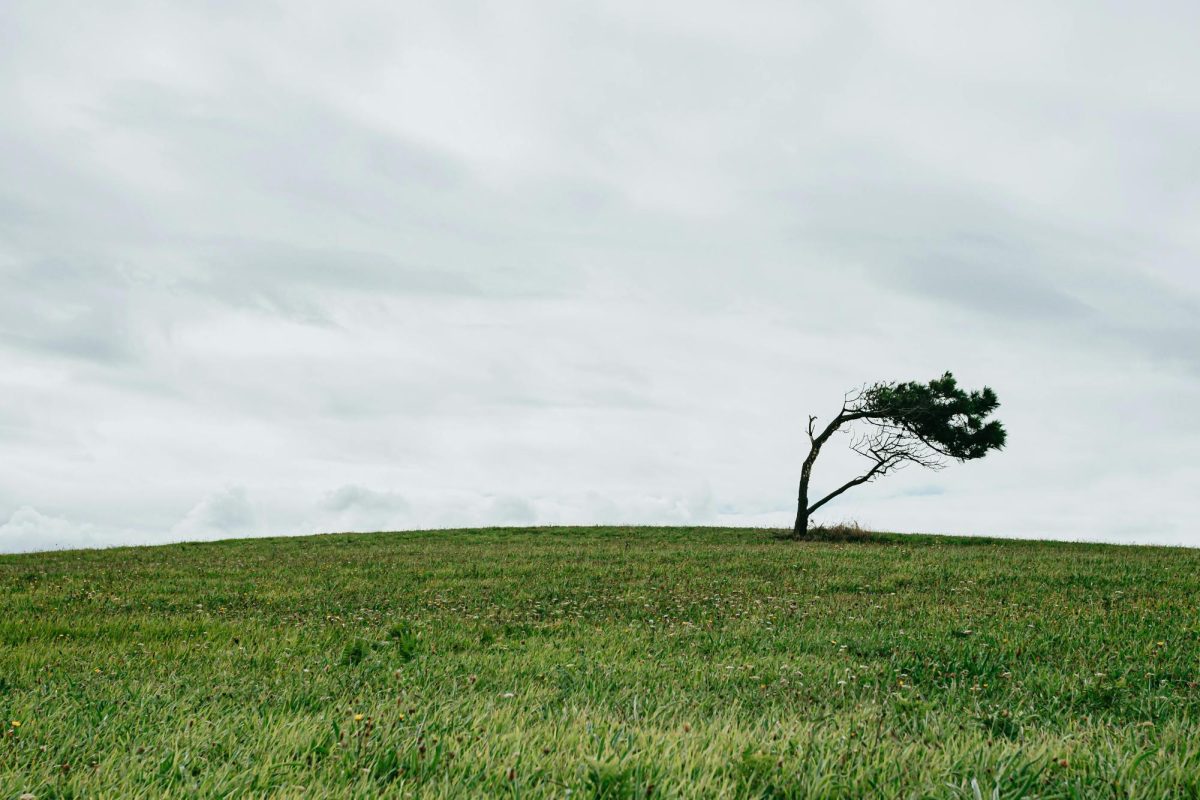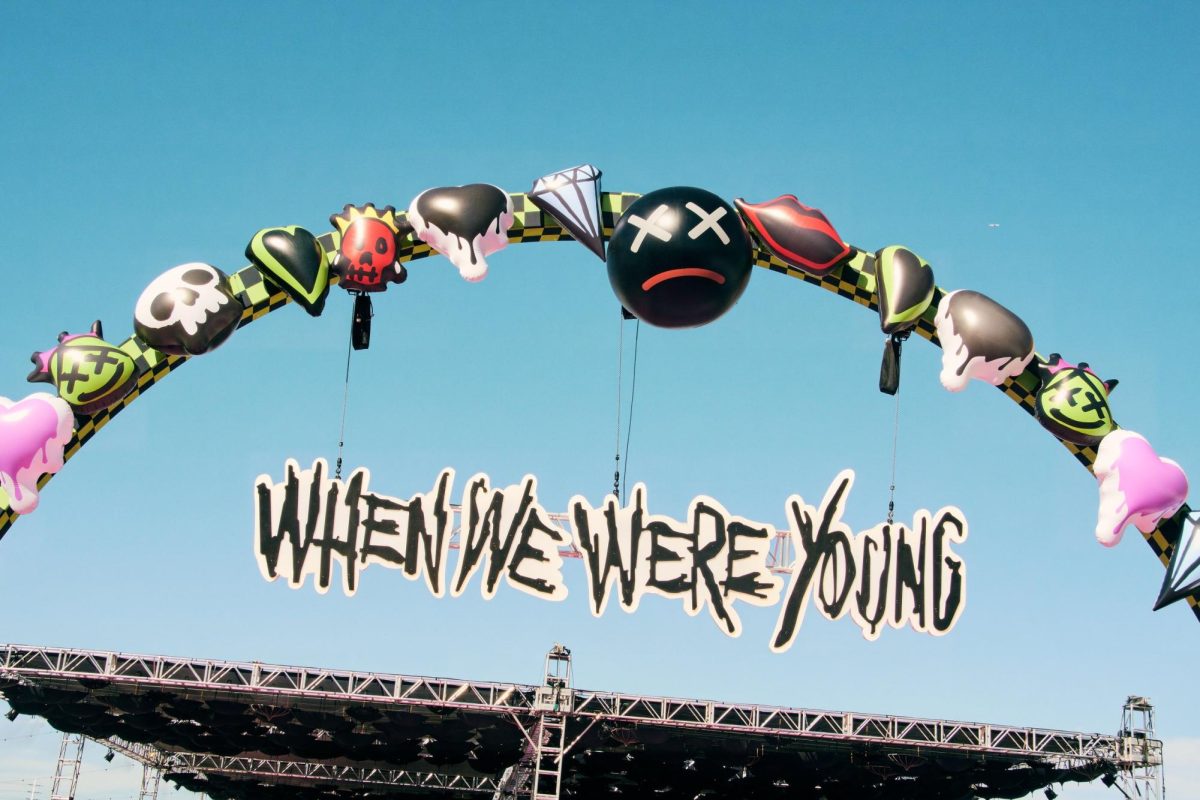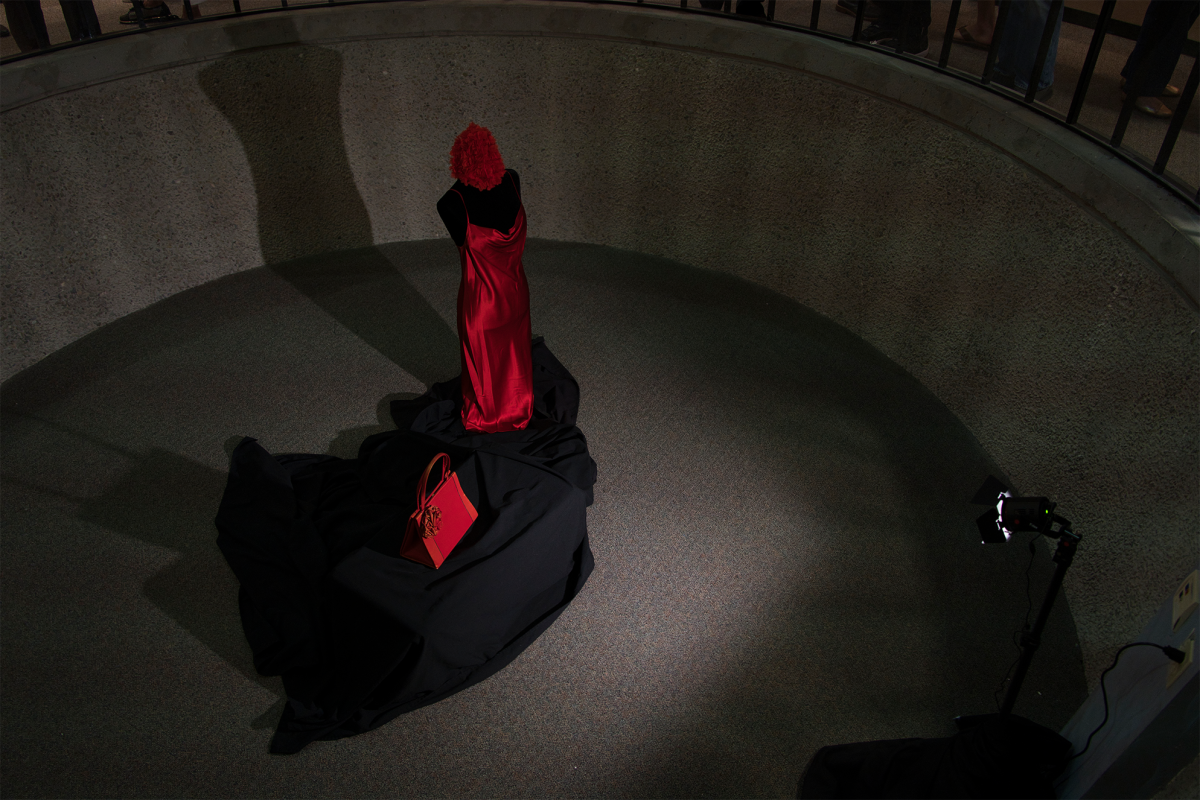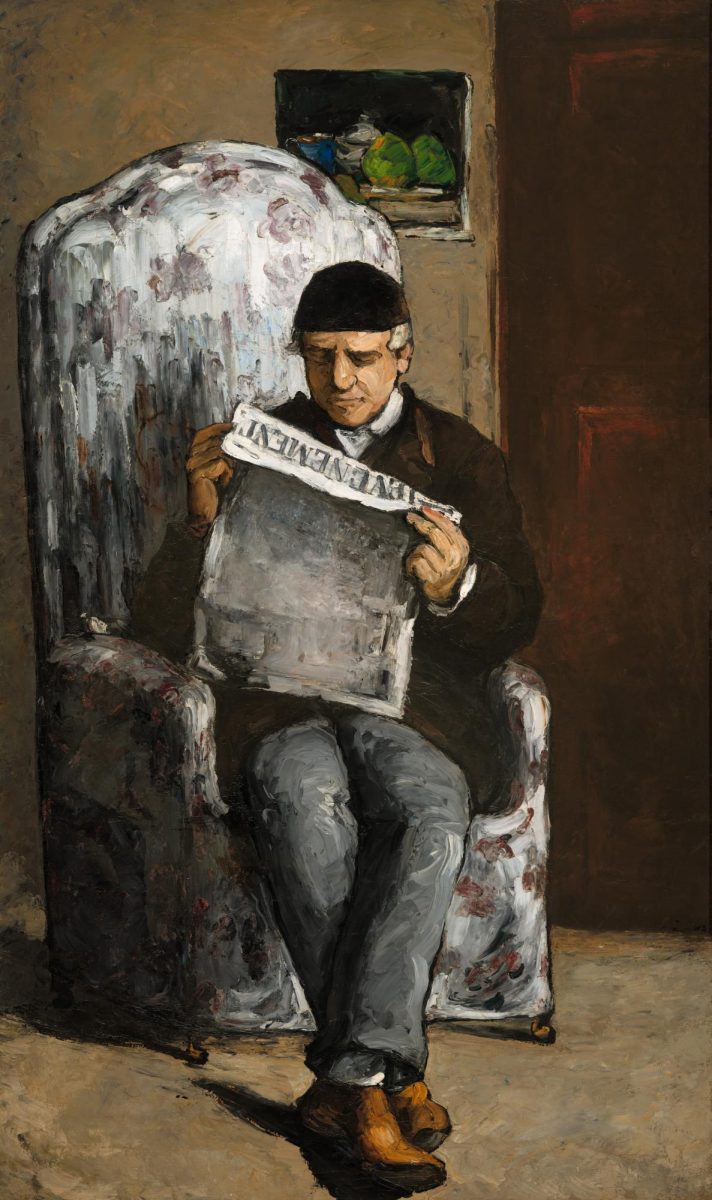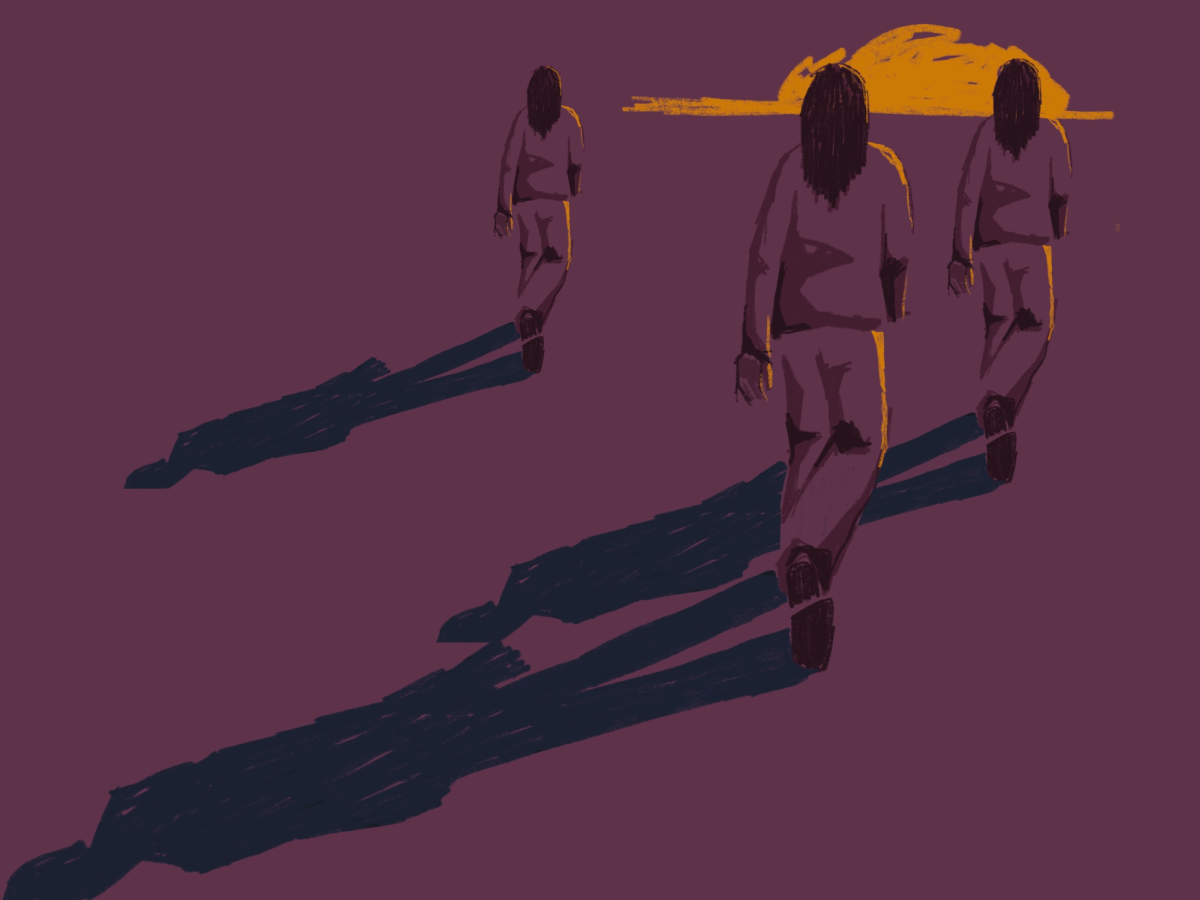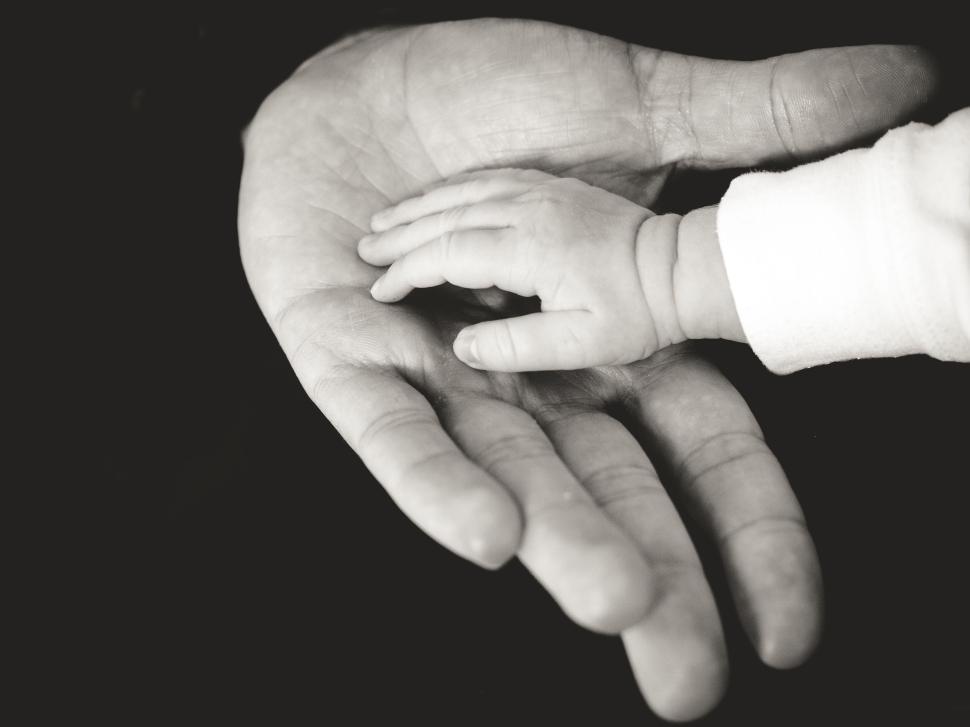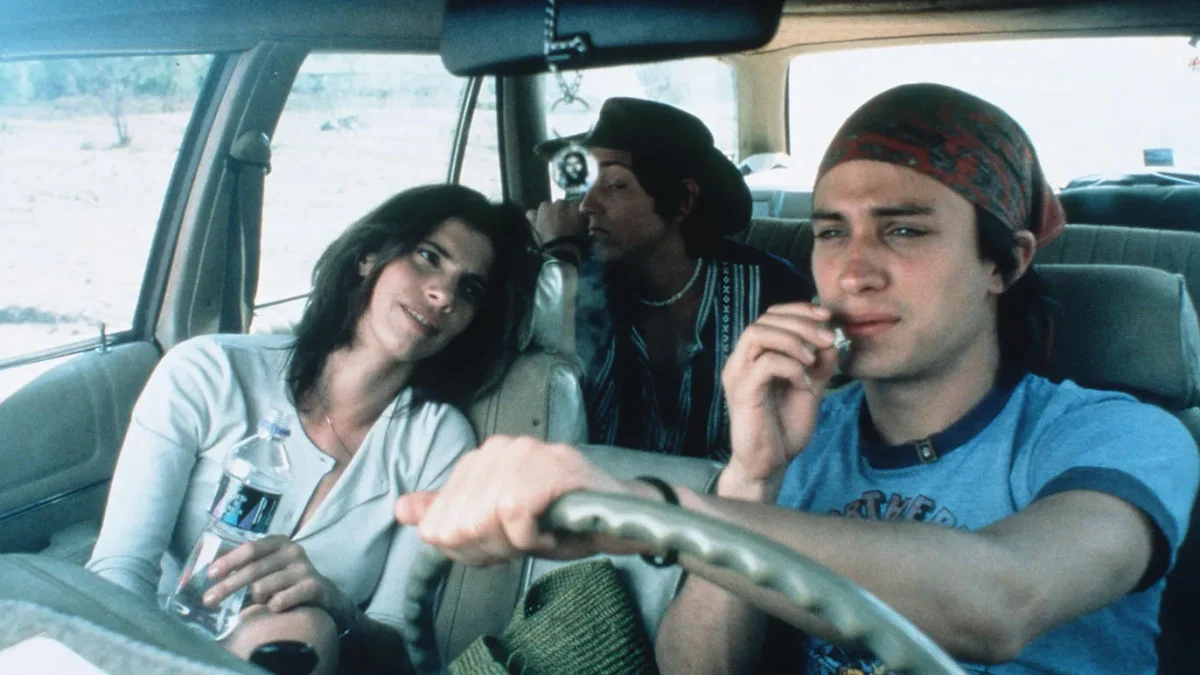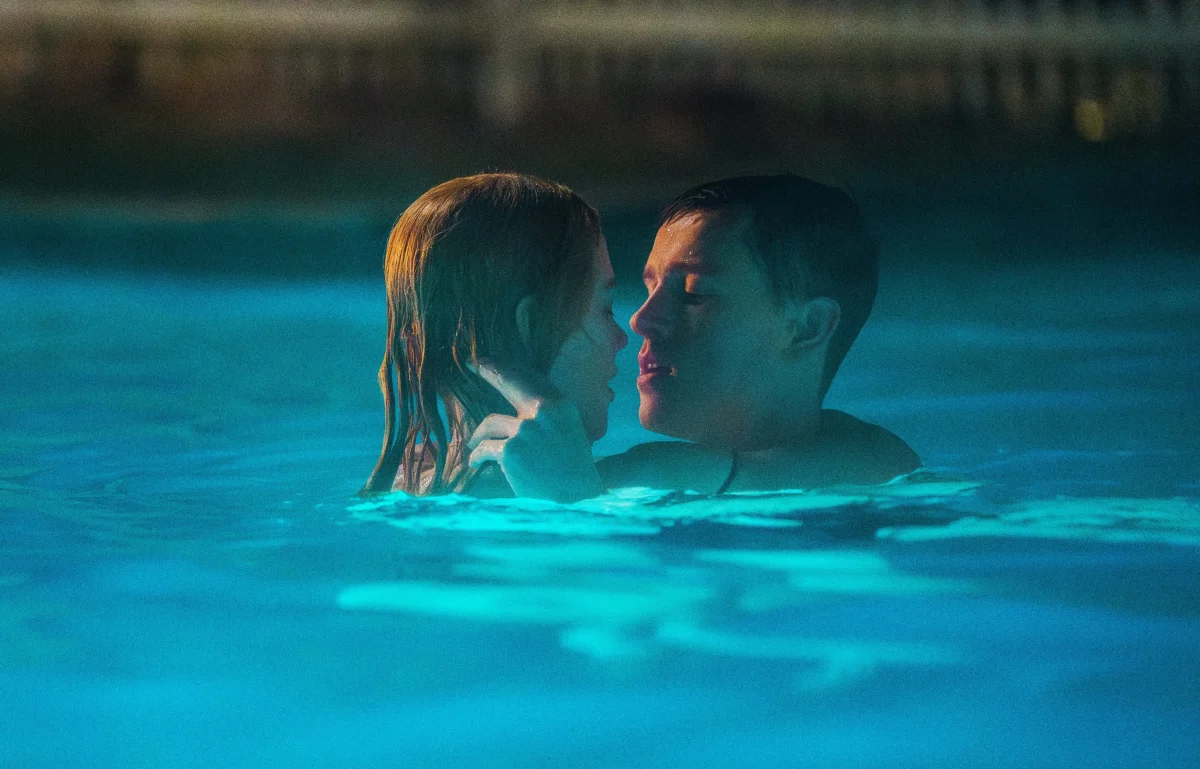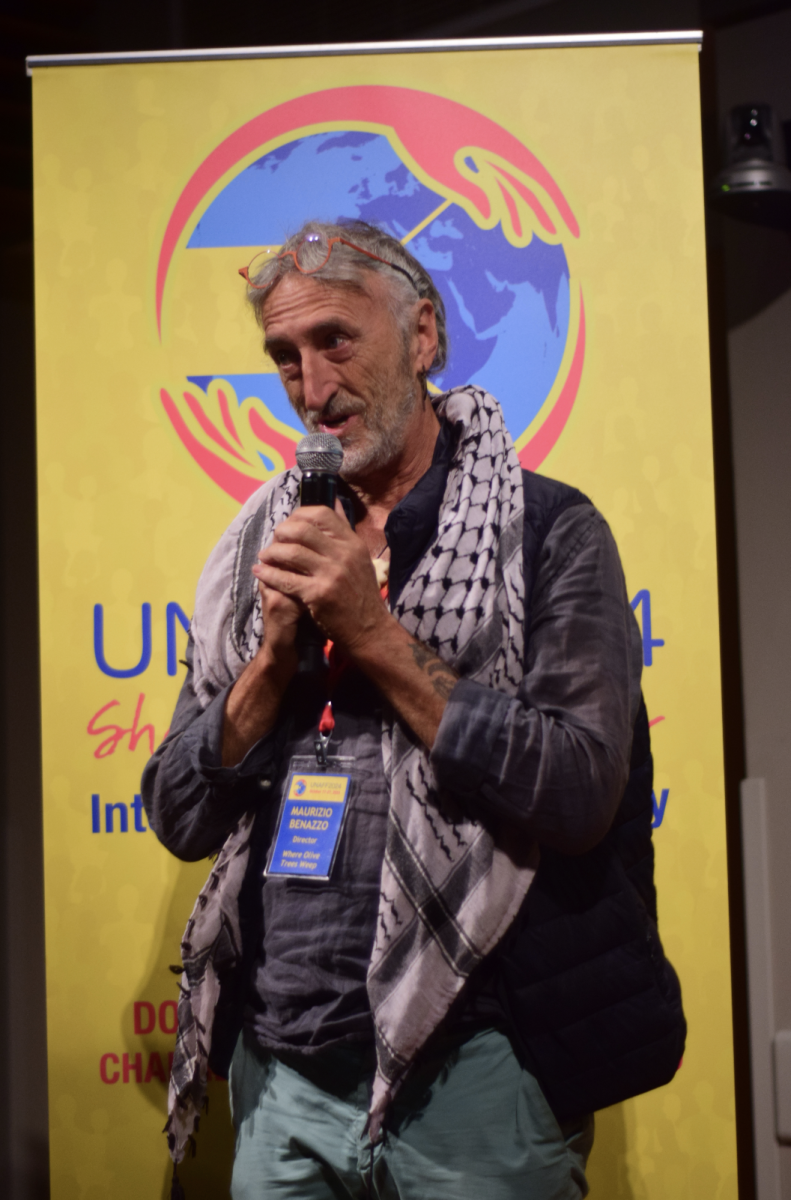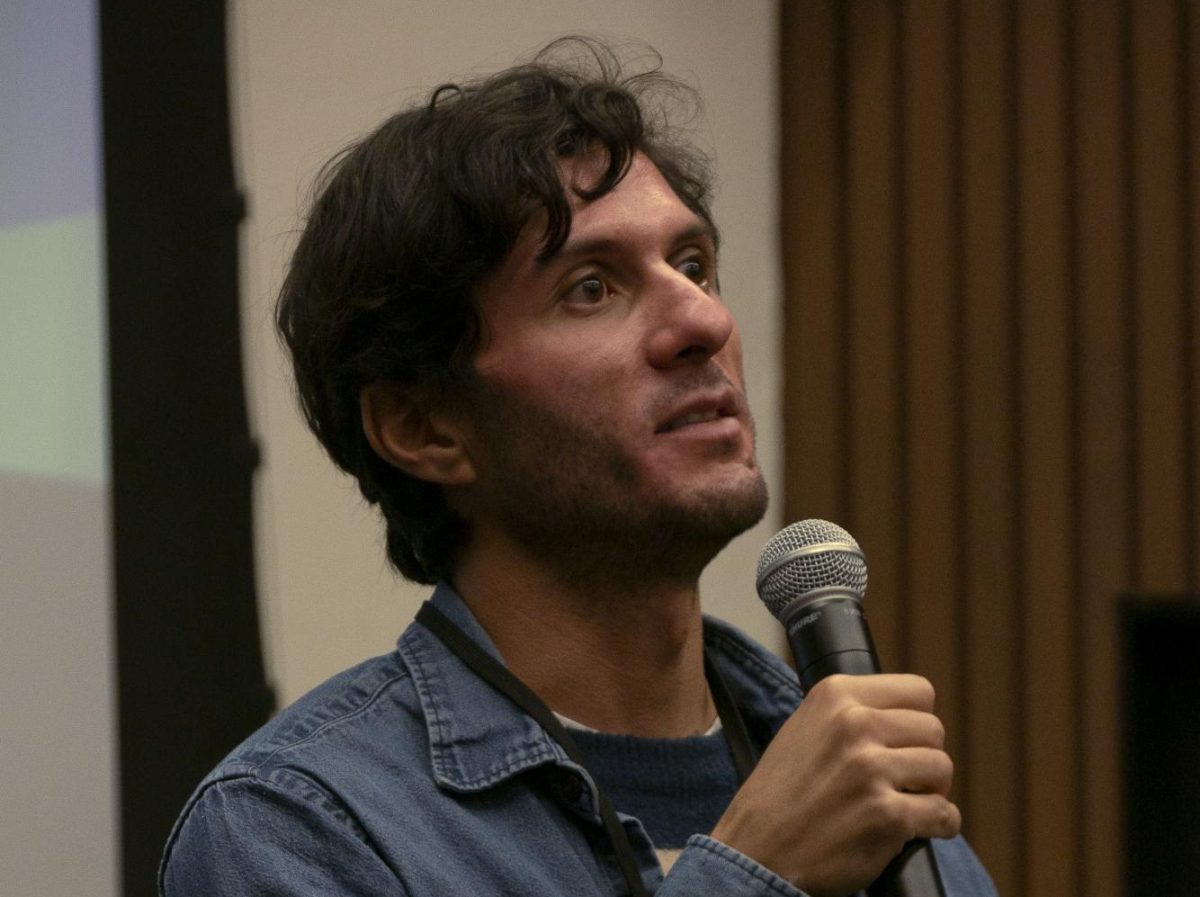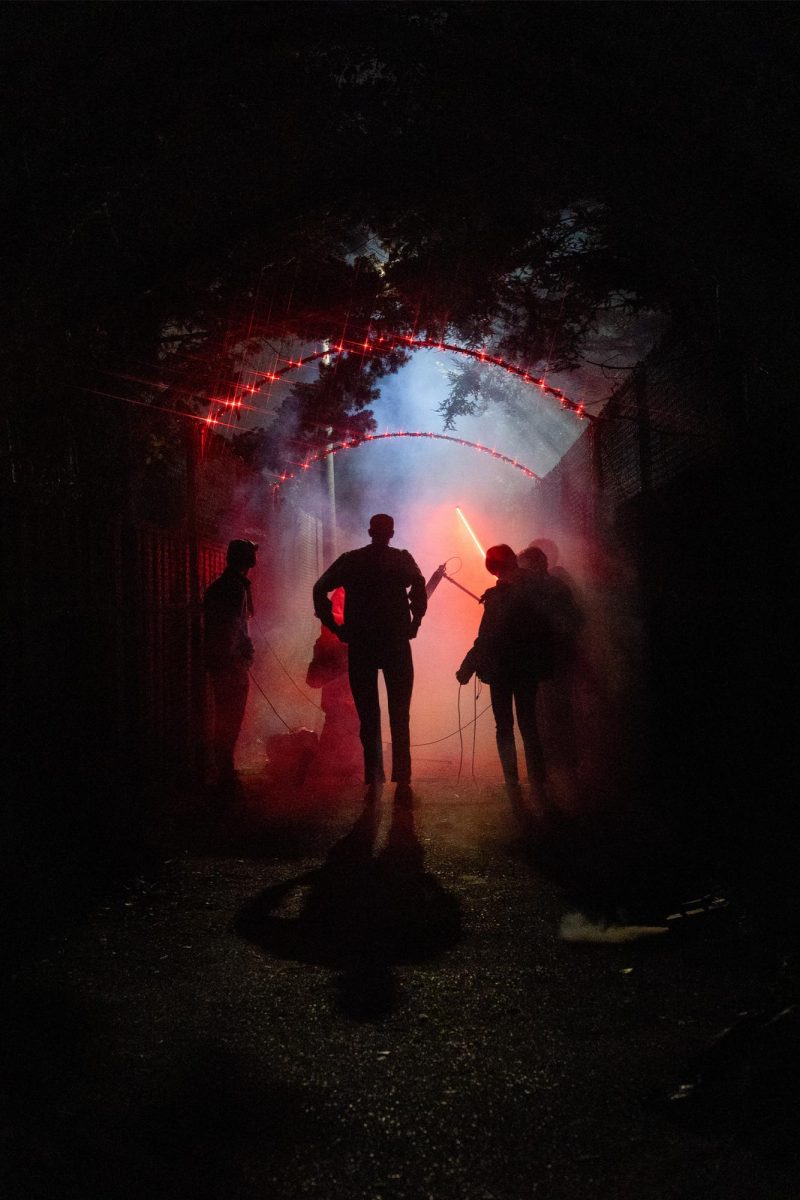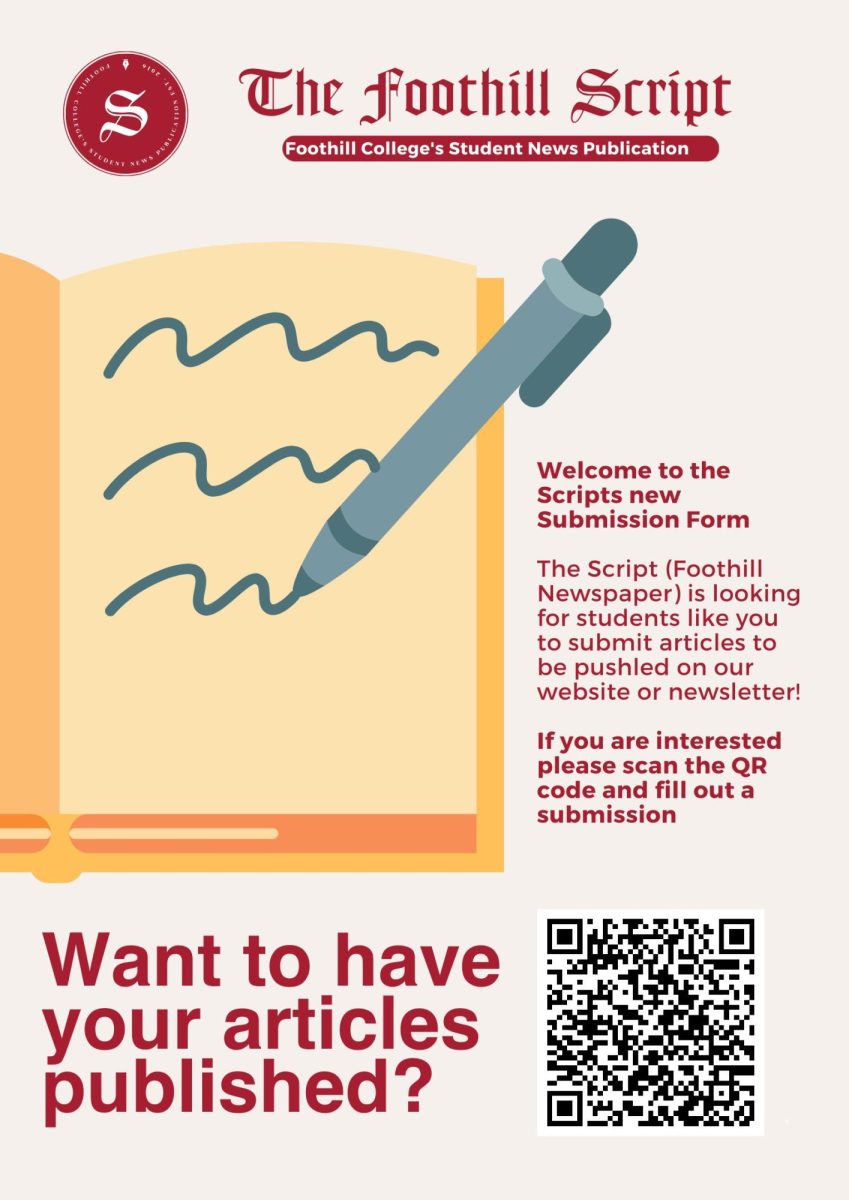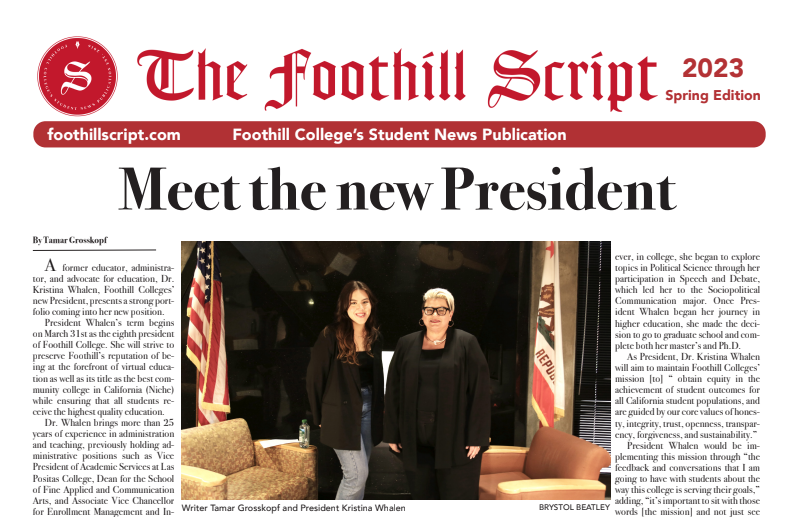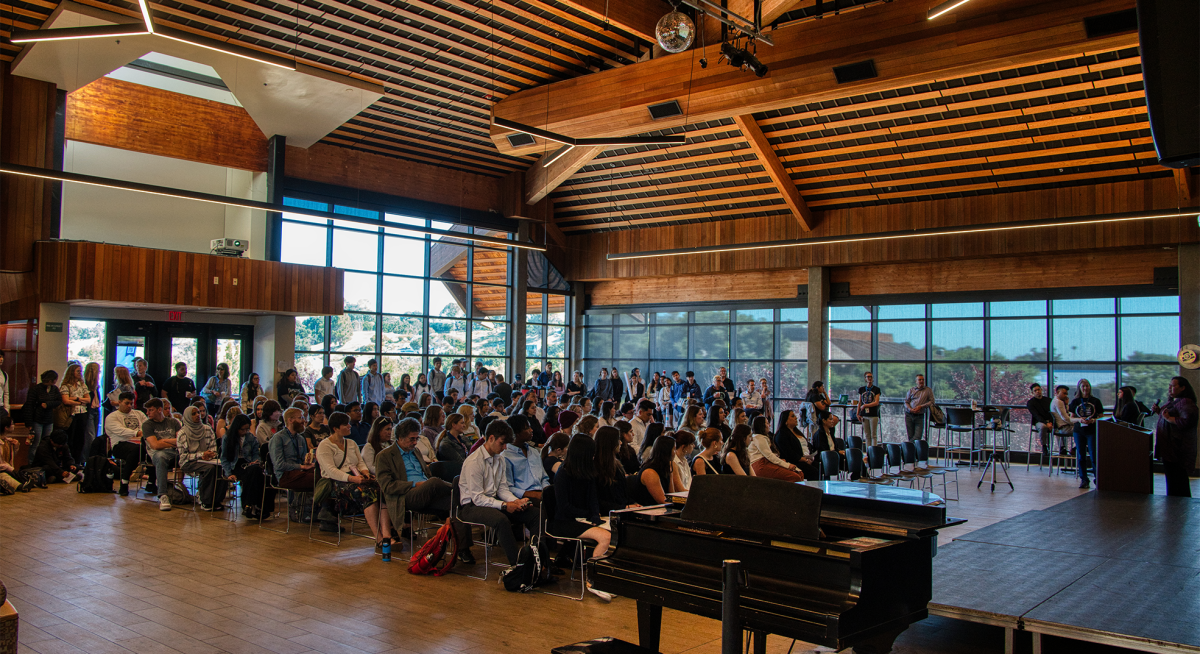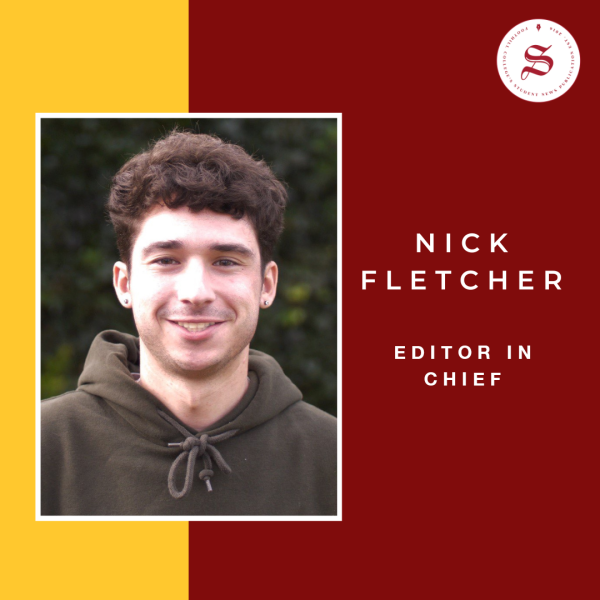On Thursday, May 16th, Foothill College gathered many of its greatest minds for the 2024 Research and Service Leadership Symposium. The symposium is billed as an opportunity to expand student’s learning beyond the walls of the classroom via worthwhile service activities and research projects. However, those categories are no limit to the creativity of ideas displayed throughout the event, with various art projects and endless innovative endeavors being celebrated.
While it’d be impossible to cover all the amazing work done by students, we at The Script will do our best to highlight as much as possible. At the end of the enthralling day of student achievement, six projects were recognized with RSLS Judges Awards, as well as five Viewers Choice awards.

Poster gallery set up in the Foothill Dining Hall.
Judges Award for Excellence in Research:
- Unveiling the Secrets of Bacterial Resistance to Honey and Engineering Genetic Resistance through Plasmid Manipulation by Ayaka Sonehara, Gina Hua, Hasnain Mirza, Nikhil Kundu, and Ryan Tsunoda
- Pedaling Forward: Exploring Safe and Sustainable Options for San Francisco’s Valencia Street Bikeway by Rachael Matheny
Judges Award for Excellence in Service
- Enhancing Anatomy & Physiology Education – A 3D Model of Brain and Spinal Cord Pathways by Ye Thi (Michelle), Mengdi Ren, and “Sari” Sarka King
- Introduction to Down Syndrome Video Series: Giving Students with Down Syndrome and Their Families a Positive Way to Explain Down Syndrome by Dashiell Meier
Judges Award for Excellence in Creative Art
- Monsters Hide in The Space Inside by Jeffrey Thomas
- Under One Roof: Compositions of Family Dynamics by Erika Wang
Audience Awards:
- Enhancing Anatomy & Physiology Education – A 3D Model of Brain and Spinal Cord Pathways by Ye Thi (Michelle), Mengdi Ren, and “Sari” Sarka King
- Transforming Food Waste to Energy through Metabolic Activity: The Potential of Microbial Fuel Cells as a Renewable Source of Energy by Sean Isomatsu, Timon Becker, Jocelyn Ma, Erin Takeshima, and Jason Gohlke
- Oral Health Education for Vietnamese Adults by Kristie Tien Nguyen, Ivy Diem To, Jayden Tran, and Van Tran
- Humans Need Not Apply: AGI Is All We Need by Alireza Shirvani
- To What Extent Can an Arduino Electromyography Kit Be Used to Closely Mimic Muscle Movements in the Body? by Brian Sawaya, Erin Takeshima, and Vy Tran
The Script will venture to cover events that were just as impactful, yet may not have been as widely recognized due to the vast amount and variety of great student work.

Jason Auzenne, a Palo Alto High School Senior, proudly presents his work.
An inspiring aspect of the event was the opportunity it lends to dual enrollment high school students. Gunn High School Junior Severiano Ortiz Millan presented an impactful work called Know the Facts, Save Lives: Raising Awareness about the Dangers of Fentanyl in a Bay Area High School, where he and a team set out to actively make a change in their school campus. With the simple act of distributing posters educating students about signs of an overdose, Narcan, and resources for someone battling substance abuse, they significantly raised awareness.
Through surveys, they concluded that they had up to a 700% increase in students that could correctly identify useful tools like Narcan and administer the life saving overdose reversal drug. This type of tangible impact from young members of the community is very inspiring towards the future of active change in the Bay Area communities.
A variety of social justice issues were widely covered by necessity. Ryann Mejia-Gonzales delivered a passionate and imperative talk titled Covering (Up) a Silent Genocide: How Poor Representation in the Media Contributes to the Missing and Murdered Indigenous Women and Girls Crisis. This project was also one of twenty finalists in consideration for the Judges Awards. She detailed how this issue meets all the criteria for a genocide, and how the likelihood for indigenous women and girls are seven times more likely than other women to be victims of a homicide. The lack of media portrayal of these victims also perpetuates the cycle of unawareness. Furthermore, when the media does cover the stories of these women and girls, they often use language that invokes harmful stereotypes.
The timeframe of these reports are telling of the media’s complacency, with a 2021 Wyoming report finding that 57% of Indigenous victims only get articles written about them once they are found dead. 0% of white victims got that same treatment. Violent language and dehumanization of the women and girls is also often used, reducing these human beings to simply a lifeless body. This is not a new issue for Indigenous people, as this disregarding of Native lives has been commonplace since the early colonization of the Americas by European settlers. Proper depictions of the issue have only come to be more widely known recently, including the narrative film Killers of the Flower Moon and the television documentary Murders in Big Horn.
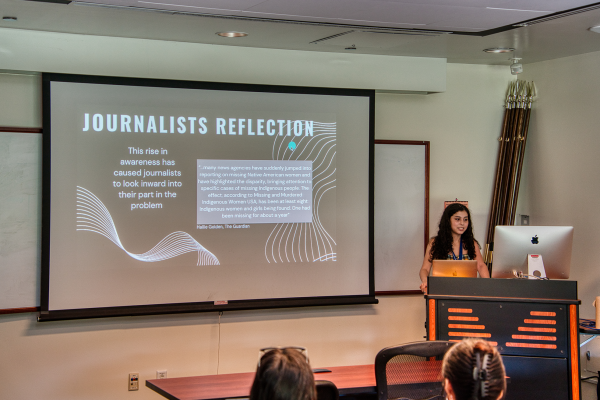
Ryann Mejia-Gonzales mid-presentation.
The latter series details this genocide, specifically the public outrage around the recent case of 14 year old Henny Scott, who went missing in her home town of Lame Deer, Montana. When her family reported her missing, the police were quick to assume she was just out drinking and partying, enabling harmful stereotypes about the indigenous community. She was eventually found dead two weeks later, very close to where she was reported missing. This blatant inaction by police sparked outrage from the community, causing an uproar too powerful for the media to ignore.
Henny’s story led to 82 new cases being uncovered, providing hopeful support and closure to nearly a hundred families. This increase in attention has sought the action of journalists, who in only one year have already reunited eight missing indigenous women and girls with their families, one who had been missing for over a year. This increase in attention starts with you, the reader, speaking the truth about the atrocities that are being continually inflicted upon the indigenous population.
Another overarching theme of the symposium was the study of medical advancements. Also a finalist for Judges Awards consideration, a presentation titled Oncolytic Retroviruses for Cancer Treatment by Andrew Vuong, Joaquin Jalova, and Nikhil Kundu detailed an exciting new avenue into cancer treatment. The trio pointed out that chemotherapy, while a decently effective treatment for the cancer itself, is of course extremely damaging to the body. This new oncolytic retrovirus treatment worked by targeting telomerase, a protein that is always present in the body, yet naturally repressed.
Part of cancer’s damaging effects occur through the activation of telomerase, and the new treatment targets those damaged cells by inserting a fix towards the gene that controls telomerase. The treatment, while early in development, is extremely effective in fighting cancer while being non-invasive for the recipient. It can also target specific cancer cells, as well as metastasized or inoperable cancers. This research is a beacon of hope for so many people suffering with or affected by cancer, and it’s extremely promising to see the next generation of researchers excelling in their studies here at Foothill.
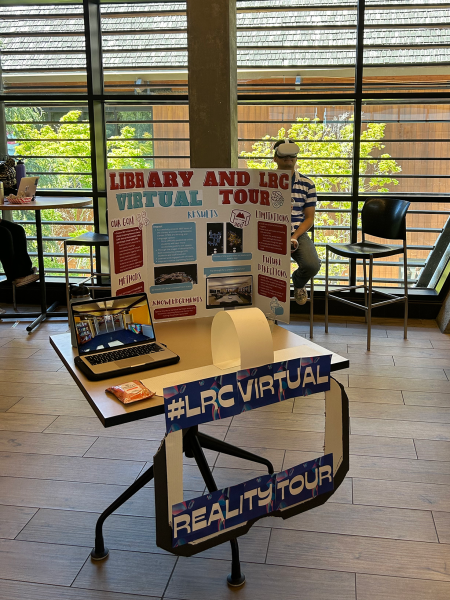
Library and LRC VR Tour table setup.
Technological applications were also made within the walls of Foothill. The VR Club collaborated with Foothill’s Library and Writing and Language Center to create an avenue for prospective and current students who may not know how to utilize the 100% student facing spaces on campus. The group captured detailed images using a state of the art 360 degree camera, stitching them together seamlessly to create the virtual projection of the spaces.
They employed the Meta Quest 2 VR Headset to create an extremely immersive space, with the ability to move around the expansive 3D realm, even traversing different floors. In the future, they hope to use these technologies to continue to make Foothill campus accessible for the thousands of students that are currently exclusively online. You can get a browser version of the tour here [link].
Amidst explorations of science and technology was a beautiful ceramic art piece sculpted by Foothill student Jeffrey Thomas. The piece was originally made for an assignment in one of Foothill art professor Kimberly Cook’s ceramics classes, in which students were expected to create a combination of a self portrait and an animal of their choice–mythical or real. Thomas selected a cat-headed serpent, known as the Tatzelwurm in central European folklore.
The piece is their labor of love, a 60-hour endeavor still in the works. Thomas spent a portion of these hours meticulously hand sculpting each of the scales individually and placing them on the body of the figure. The serpent’s cat head was resculpted after the first version fell off and shattered after 12 hours of work. The creature’s vivid, colorful hair (not at all unlike that of its artist) consists of a collection of hand shaped ceramic slabs, the texture created with a small wire brush and a needle tool.
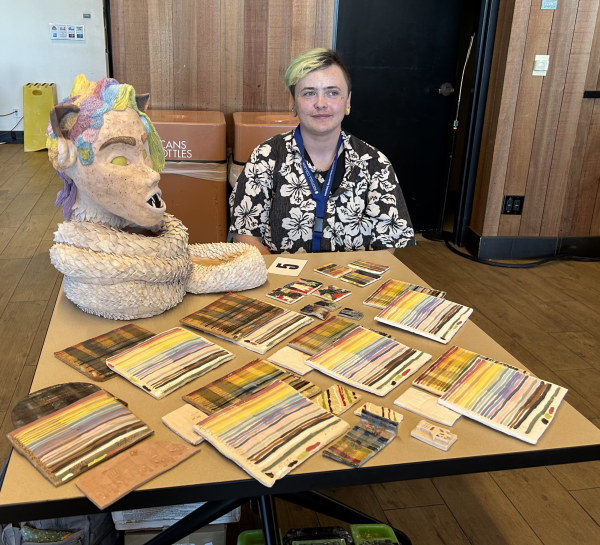
Jeffery Thomas with their work Monsters Hide in The Space Inside.
When finished, the piece will be a planter, with pothos growing from the base of it and flowing out through the mouth and ears. It is part of a pair, the other half a second head that is awaiting repair after cracking in the kiln. Together, the pair is called Monsters Hide in The Space Inside.
Accompanying the Tatzelwurm was an array of ceramic slabs decorated by strips of paint. Thomas described these palettes as an “exploration with different types of colorings, glazes, and materials in an effort to make the main sculpture the best that it can be.”
RSLS provides a great opportunity for students to present their work and gain valuable experience presenting to their peers. If this concept interests you, all the details regarding this year’s installment as well as future sign ups for the next installment of RSLS will be available here in the coming months.

